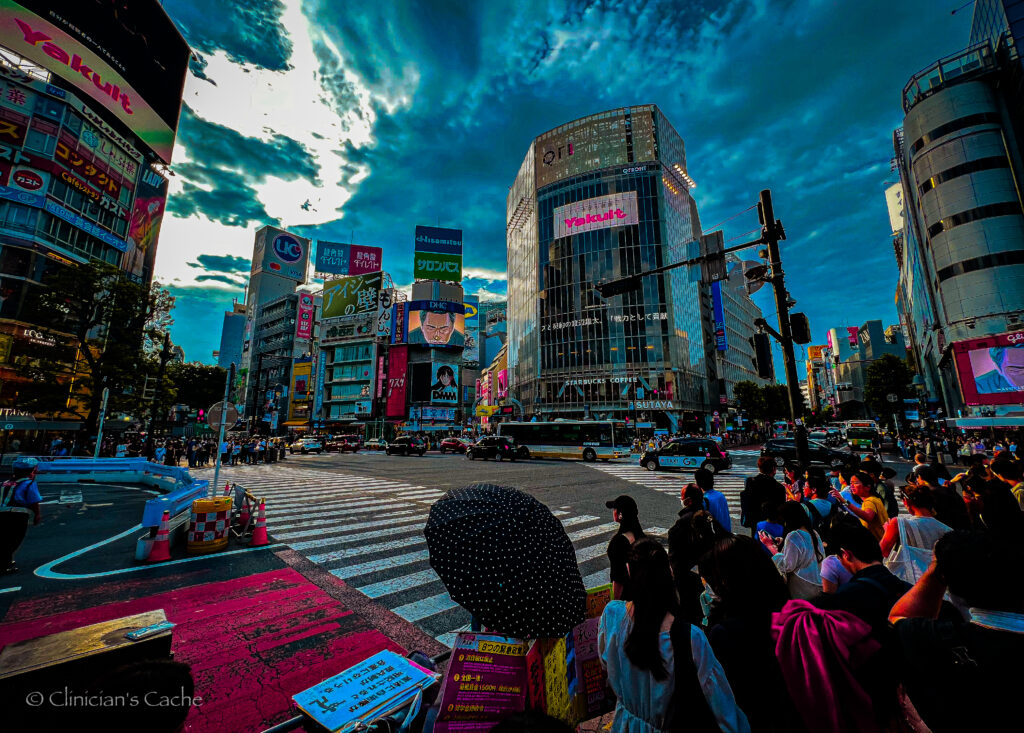Hello, fellow neurodiverse adventurers! I’m Chadwick Lukasiewicz, a Licensed Professional Counselor specializing in trauma therapy, AuDHD-er, and a passionate globe-trotter. Ready to embark on a journey that changed my perspective on travel and neurodiversity?
Picture this: Midnight in a quaint Swiss town, carefully planned itinerary in shambles, late trains, the entire town closed and sound asleep…including my hotel…surrounded by towering Alps and the cold of Winter. For many, a nightmare. For an ADHD brain like mine? An irresistible invitation to adventure.
Instead of panicking, I embraced the chaos. That night of stargazing, exploring the sleeping town, and dawn’s breathtaking alpine sunrise became the antidote to my professional burnout and a vivid reminder of how our neurodivergent minds can transform setbacks into wonders. In fact, it is one of my greatest memories.

Welcome to “The Ultimate ADHD Travel Guide: Embracing Neurodiversity Around the Globe.” Whether you’re a seasoned ADHD traveler, Autistic adventurer, OCD explorer, newly diagnosed AuDHD like me, or anywhere on the neurodivergent spectrum, this guide is your passport to extraordinary experiences.
We’ll explore how your unique neurotype is your secret superpower for unforgettable adventures. You’ll learn to:
- Transform impulsivity into life-changing detours
- Reframe time blindness for flexible, spontaneous exploration
- Navigate sensory experiences across diverse cultures
- Use your unique perspective to solve travel challenges creatively
- Build resilience through mindful adventure therapy
Drawing from my professional expertise and personal journeys, this guide is as much about self-discovery as it is about global exploration.
So, are you ready to find joy in the chaos and make the world your playground? Buckle up (or don’t – spontaneity is our middle name, after all). Let’s embark on this neurodiverse journey together!
Understanding Neurodiverse Travel: What Makes It Different?
Ever wonder why your ADHD brain seems to come alive when you step off a plane in a new country? Or why that meticulous itinerary you spent hours creating suddenly feels like a straightjacket the moment your adventure begins?
Welcome to the wonderfully complex but thrilling world of neurodiverse travel, my friends!
Let’s start by breaking down what we mean by neurodiversity in the context of globe-trotting. As someone who’s navigated the world with ADHD and later discovered I’m actually AuDHD (that’s ADHD with a side of Autism—I like to think of it as the neurodivergent: bundle edition), I’ve learned that our brains aren’t just wired “differently” – they’re wired uniquely for adventure.

The ADHD Traveler’s Experience
ADHD (Attention Deficit Hyperactivity Disorder), isn’t just about struggle with focus. It’s a whole world of traits that can turn travel on its head:
- Impulsivity that leads to spontaneous detours and hidden gems
- Hyperfocus that transforms you into a human guidebook on niche topics
- Time blindness that can make you miss flights… or discover a whole city during a layover
(Beauchaine et al., 2017; Groen et al., 2020)
The Autistic Adventurer’s Perspective
Then there’s ASD (Autism Spectrum Disorder), which brings its own flavor to the travel experience:
- Heightened sensory awareness that can make new environments overwhelming… or incredibly rich and detailed
- Deep, specific interests that can turn you into an expert on local history or cuisine
- A preference for routine that can clash with the unpredictability of travel
(Kranowitz, 2016; Schulze et al., 2020)
The AuDHD Explorer’s Paradox
And for those of us with AuDHD? It’s like having an internal compass that spins wildly between craving novelty and needing structure. A truly paradoxical life…but, trust me, it makes for some interesting life and travel stories!
- Intense curiosity that drives you to explore off-the-beaten-path locations, uncovering hidden treasures
- Pattern recognition that helps you quickly adapt to new cultural norms and transportation systems
- Emotional sensitivity that allows for deep, meaningful connections with people from diverse backgrounds, even across language barriers
(Ghirardi et al., 2019)
The OCD Globetrotter’s Balancing Act
Let’s not forget about OCD (Obsessive-Compulsive Disorder), which adds its own unique dimension to the travel experience:
- Intrusive thoughts that can heighten travel anxiety… or motivate meticulous planning
- Compulsive behaviors that might complicate packing or airport procedures… but can also ensure you never forget essential items
- An intense need for control that can clash with travel unpredictability… yet might lead to discovering perfect, off-the-beaten-path accommodations
For those with OCD, travel becomes a delicate balance between managing symptoms and embracing the unexpected. It’s like having an internal security system that’s always on high alert – challenging at times, but also potentially life-saving in unfamiliar territories!
Challenges and Superpowers
Now, I know what you’re thinking. “Chadwick, this sounds like a recipe for travel disaster!” But here’s where the magic happens – these same traits that might seem challenging are actually your secret travel superpowers.

Ol’ Blue Eyes’ Hidden Oasis: A Serendipitous Symphony of Sinatra and Spirits
Take my impromptu adventure in Kuala Lumpur, for instance. After an evening mesmerized by the KLCC Lake Symphony Light and Sound Water Fountain show, my ADHD impulsivity kicked in. Instead of heading back to my hotel, I found myself wandering through the K Avenue Complex.
My heightened sensory awareness (thanks, AuDHD!) picked up on a subtle detail – a tiny, iconic gold hat emblem, barely noticeable to the untrained eye. Intrigued, I approached what seemed like an ordinary door.

As I opened it, I was transported into another world – “Frank’s Bar KL,” an incredible speakeasy hidden within the heart of KL’s “golden triangle.” The faint jazz melody and the scent of craft cocktails confirmed I’d stumbled upon something special.
Stepping inside, I was enveloped by an atmosphere that whispered stories of the Big Apple’s secret Prohibition-era haunts. The bartender, noticing my wide-eyed wonder, introduced me to their “Signature Sinatra Mix” – a sonic-aged cocktail that had me crooning, “Fly Me to the Moon” after just one sip.

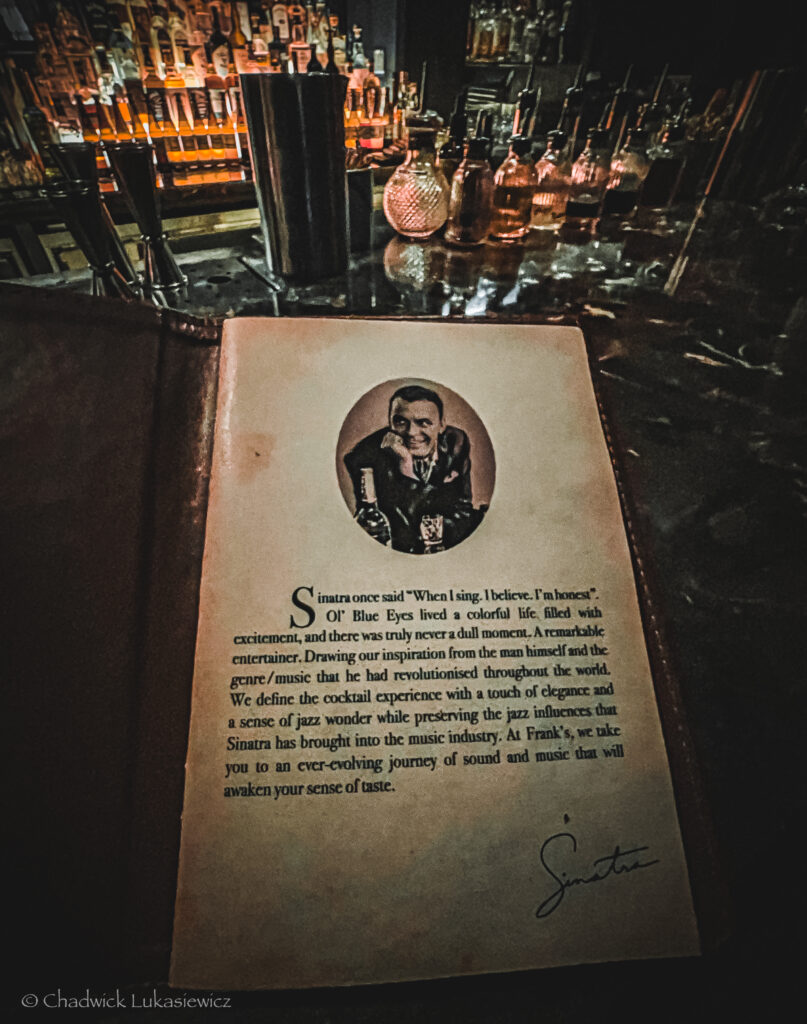


What could have been a simple night became an unforgettable experience, connecting with locals and expats in this secret oasis. As Ol’ Blue Eyes would say, “The best is yet to come,” and in that moment, I couldn’t agree more.
This is the magic of neurodiverse travel: turning unexpected discoveries into the high notes of your journey.
But let’s be real – it isn’t all spontaneous magic. It comes with its unique set of challenges:
- Sensory overload in bustling markets or crowded attractions
- Difficulty with changing plans or unexpected disruptions
- Struggles with executive functioning when navigating complex travel logistics
- Anxiety about social interactions in unfamiliar cultural contexts

Turning Challenges into Opportunities
Here’s the thing, though. These challenges? They’re not roadblocks. They’re invitations to develop strategies that not only make travel possible but make it and life extraordinary.
For example, that sensory overload you might experience in a crowded bazaar? It can become a gateway to noticing details others miss – the intricate patterns on textiles, the subtle variations in spice aromas, or the interactions among locals (Barkley, 2020; Brown, 2013).

Your need for routine? It can lead you to discover charming local cafes that become your daily “home base” in a new city, fostering deeper connections with local culture.
The key is to work with your neurodiverse brain, not against it. It’s about turning perceived weaknesses into strengths:
- Use that hyperfocus to become an expert on your destination’s hidden gems
- Let your sensory sensitivities guide you to quieter, more authentic local experiences
- Embrace your unique perspective to solve travel challenges creatively
- Lean into your extraordinary attention to detail
Remember, neurodivergent travel isn’t about fitting into a neurotypical mold of what travel “should” be. It’s about creating a travel experience that resonates with your unique neurotype. It’s messy, it’s unpredictable, and it’s absolutely beautiful.
So, the next time someone asks what makes neurodiverse travel different, you can tell them this: It’s not just trips around the world – it’s a journey of self-discovery, where every detour, sensory experience, and unexpected connection becomes a part of your personal growth story.
Advanced Neurodiverse Travel Strategies: Leveling Up Your Global Adventures
Now that we’ve embraced our neurodivergence, it’s time to level up our game. Think of this section as your advanced toolkit for transforming your unique brain into a masterclass in global exploration.
Leveraging Unique Traits in Different Cultural Contexts
For ADHD Travelers:
- Your natural curiosity and ability to strike up conversations can be an incredible asset.
- In cultures that value social connection (like Spain or Brazil), it can open doors to authentic experiences.
Personal Anecdote: While exploring Shinjuku one night, my ADHD-fueled curiosity led me to Jam17 Dining & Bar on the 17th floor of Tokyu Kabukicho Tower. There, I randomly struck up a conversation with a fellow traveler named Julio over our shared appreciation for the local Ne10 craft gin. - What started as a casual chat turned into an impromptu bar-hopping adventure (and a whole lot of local snacks and apps) across Shinjuku until the subways closed. That spontaneous connection not only gave me insider tips for my trip but also created an unforgettable memory of Tokyo’s nightlife and a new friend from Columbia! That’s the kind of experience you can’t plan – it’s pure ADHD magic!
Advanced Strategy: Pair spontaneity with pre-trip cultural research.
- Know basic cultural norms to channel social energy appropriately.
- Example: In Japan, where direct questions can be viewed as impolite, rephrase rapid-fire ADHD questions into more indirect observations.
For Autistic and AuDHD Adventurers:
Your attention to detail and deep interests can transform your travels, especially in places rich with history or intricate art (like Italy or India).
Advanced Strategy: The “Special Interest Deep Dive“
- Before your trip, research a specific aspect of your destination’s culture or history that aligns with your interests.
- Use this knowledge to enrich your experience and share insights with travel companions.
- Example: When visiting Rome, I spent weeks researching ancient Roman engineering. While other tourists saw ruins, I saw stories. I could explain how aqueducts worked or why certain architectural choices were made.
Balancing Stimulation and Relaxation


This is crucial, especially for those with AuDHD who might simultaneously crave excitement and quiet.
Advanced Strategy: The “Sensory Sandwich“
- Plan days with high-stimulation activities bookended by low-key experiences.
- Structured environments can be particularly beneficial for neurodiverse travelers struggling with unpredictable cultural norms (Ghirardi et al., 2019).
- Example: While exploring Tokyo
- Start with a quiet temple visit
- Dive into the sensory riot of Akihabara’s electronics district
- End with a peaceful park walk
Long-Term Travel Tips
Developing a portable routine is key for extended trips.
My Game-Changing Routine:
- Morning: Body-weight and/or resistance band workout at my lodging
- Daily: Short journaling or photography editing session
- Evening: Setting intentions and top priorities for the next day in the evening
- Bedtime: Nintendo Switch sesh (come on, gotta keep the nerd alive) followed by a Headspace “Soundscape”
This portable piece of “home” helped anchor me, whether in a tiny hotel in bustling Tokyo or a quiet bungalow in the Bali jungle.
The “Special Interest Spotlight” Technique
Choose one aspect of each destination that aligns with your passions and make it a focal point. For instance, my passion for ancient history guided me through Hagia Sophia, bringing the past of Byzantium vividly to life.

Managing Meltdowns and Shutdowns
Advanced Strategy: The “Sensory Audit” after each trip:
- Reflect on environments or situations that led to overwhelm
- or that could have led to overwhelm but surprisingly didn’t!
- Identify which brought calm and joy
- Use this self-awareness to plan future adventures
This technique helped me discover I thrive in places with a mix of nature and urban environments, leading to favorite destinations like Japan, Bali, and, of course, Colorado. (Aron, 2016; Kranowitz, 2016)
Remember, these strategies aren’t about eliminating challenges—they’re about harnessing our unique neurotypes for richer, more meaningful travel experiences. It’s about finding joy in the chaos and letting our beautifully complex brains guide us to extraordinary adventures.
Pre-Trip Planning: Turning Neurodiverse Traits into Travel Superpowers
Ready to tackle the beast that is pre-trip planning? I know, I know – for some of us, the word “planning” might send shivers down our spines. But what if I told you that your neurodivergent brain is actually a secret weapon for creating the most epic travel plans?
Harnessing Hyperfocus for Research
First up: harnessing hyperfocus for trip research. Oh boy, do I have a story for you about this one!
Picture this: It’s 2 AM, and I’m ready for first tracks, but can’t sleep out of excitement. I’ve just spent the last six hours in a hyperfocus spiral, researching every possible snowboarding route in the Swiss Alps between Andermatt-Sedrun-Disentis.

Did I mean to stay up all night planning? Nope. Did I emerge with a color-coded, minute-by-minute itinerary of the best powder runs, cozy mountain huts, and scenic train routes? You bet I did!
Here’s the advanced strategy: instead of fighting these hyperfocus sessions, lean into them. Create a dedicated “planning zone” with all your resources at hand. Set a timer for 90-minute intervals (because let’s face it, we forget to eat or blink during hyperfocus). Use this time to dive deep into trip research – but with a twist.
Other times, I set 25 minute Pomodoro Timers (I LOVE the Forrest app on iPhone) with 5 minute mental breaks. Then, after 3 sessions I take a 20-30 minute break.
Rather than trying to plan every aspect at once, focus each session on a specific element of your trip. One day might be all about unique accommodations, another on off-the-beaten-path attractions. This approach prevents overwhelm and turns your hyperfocus into a superpower for uncovering hidden gems.
Creating Flexible Itineraries
Now, let’s talk about creating flexible itineraries. This is where our neurodiverse brains truly shine, transforming chaos into a beautifully orchestrated travel symphony. The key is to build a framework that balances structure with spontaneity.
I use what I call the “Anchor Point” Method. Instead of planning every hour, I choose one key activity or location for each day – that’s the anchor. Everything else is flexible.
For example, on my trip to Japan, one day’s anchor was “Visit teamLab Planets in Tokyo.” I knew I wanted to do that, but I left the rest of the day open for whatever caught my ADHD butterfly attention.
This method works beautifully for AuDHD brains too. It provides the structure that our Autistic side craves while allowing the flexibility our ADHD thrives on. It’s like giving your brain a safety net and wings at the same time. (Barkley, 2020; Brown, 2013)
Neurodivergent-Approved Packing Strategy
Let’s not forget the dreaded task of packing. Oh, the paradox of being simultaneously over-prepared and forgetful! Here’s my neurodivergent-approved packing strategy:
- Create a master packing list. Go wild with your hyperfocus and list EVERYTHING you might need.
- Use color-coding or categories to organize items (e.g., blue for clothes, green for toiletries).
- Play the “worst-case scenario” game. What if you forget your toothbrush? Can you buy one there? This helps prioritize what’s essential.
- Use packing cubes or bags to create mini-kits for different aspects of your trip (e.g., a “beach day” kit, a “city exploration” kit).
- Take photos of your packed bags. Trust me, this has saved me countless times when I’ve doubted whether I packed something mid-trip.
Lean into structured strategies that work with, not against, your brain. For a deeper dive, check out my 10 ADHD Packing Tips for Stress-Free Travel.
Managing Medications and Accommodations
Now, let’s address the elephant in the room: managing medications and accommodations across different countries. This requires some extra planning, but it’s crucial for a smooth trip.
First up, meds. Always pack more than you think you’ll need – I usually go for 1.5 times my trip length (if I can get them anymore; thank’s ADHD-med shortage). Keep a doctor’s note explaining your prescriptions, and research the legal status of your medications in your destination countries.
Don’t forget your over-the-counters! I generally always bring along Aleeve, Benadryl, and Pepto (ain’t nobody got time for traveler’s diarrhea).
For accommodations, look for places that align with your sensory needs. As someone with AuDHD, I need a mix of stimulation and calm. I often book a lively hotel for part of my trip and a quiet Airbnb or Glamping ground for the rest. Always read reviews carefully, looking for mentions of noise levels, bed comfort, and proximity to public transport.
Here’s a pro tip: email or WhatsApp your accommodations in advance about any specific needs. Many places are happy to accommodate requests like a quiet room or extra pillows if you ask ahead of time.
Mental Preparation
Lastly, remember that pre-trip planning is not just about logistics – it’s also about mental preparation. I always include “emotional planning” in my prep work. This means visualizing potential challenges and planning coping strategies. What will you do if you feel overwhelmed in a crowded market? How will you handle a delayed…or even canceled…flight?
Remember, the goal of all this planning isn’t to create a rigid schedule – it’s to give your neurodiverse brain the tools it needs to thrive in new environments. By turning your unique traits into planning superpowers, you’re setting yourself up for a trip that’s not just enjoyable, but transformative.
Navigating Sensory Experiences in New Environments
Ah yes, sensory experiences – the double-edged sword of neurodiverse travel.
On one hand, our heightened sensitivities can make new environments feel overwhelming. On the other, they allow us to experience the world with an intensity and attention to detail that many only dream of. Let’s explore how to navigate this sensory rollercoaster and turn potential overload into unforgettable moments of connection and joy (Schulze et al., 2020).

Creating Sensory Profiles
First: identifying potential triggers and pleasures in popular destinations. This is where your pre-trip research (remember that hyperfocus superpower?) comes in handy. But let’s take it a step further.
I’ve developed what I call a “Sensory Profile” for different types of destinations. For example (my growing list):
- Bustling Cities (e.g., Tokyo, New York):
- High auditory and visual input from urban environments
- Potential for touch overload in crowded spaces
- Varied olfactory experiences (street food, urban scents)
- Constant proprioceptive input from navigating busy streets

Tokyo, Japan
- Beach Destinations (e.g., Bali, Caribbean islands):
- Strong olfactory experiences (salt air, sunscreen)
- Varied tactile sensations (sand, water, sun on skin)
- Soothing auditory input (waves, seabirds)
- Bright visual stimuli (sun, water reflections)

- Desert Expeditions (e.g., Sahara, Atacama):
- Unique tactile experiences (fine sand, rough rock formations)
- Extreme temperature variations (hot days, cold nights)
- Potential for visual overload with vast, open landscapes
- Intense olfactory experiences (dry air, aromatic desert plants)

- Historical Sites (e.g., Rome, Athens):
- Rich visual details in architecture and artifacts
- Potential for auditory overload with tour groups
- Varied tactile experiences (ancient stones, cool interiors)
- Unique olfactory inputs (old buildings, incense in religious sites)

- Mountain Treks (e.g., Rocky Mountains, Himalayas):
- Intense visual stimuli (panoramic views, stark landscapes)
- Challenging proprioceptive and vestibular input (hiking on uneven terrain, altitude changes)
- Varied temperature sensations (cool air, warm sun)
- Potential for auditory underload in remote, quiet areas

- Rainforest Adventures (e.g., Costa Rica, Amazon):
- Rich, immersive auditory experiences (bird calls, insect sounds, rustling leaves)
- Intense olfactory input (earthy scents, tropical flowers)
- Varied tactile sensations (humid air, rough tree bark, smooth leaves)
- Potential for visual overwhelm in dense, lush environments
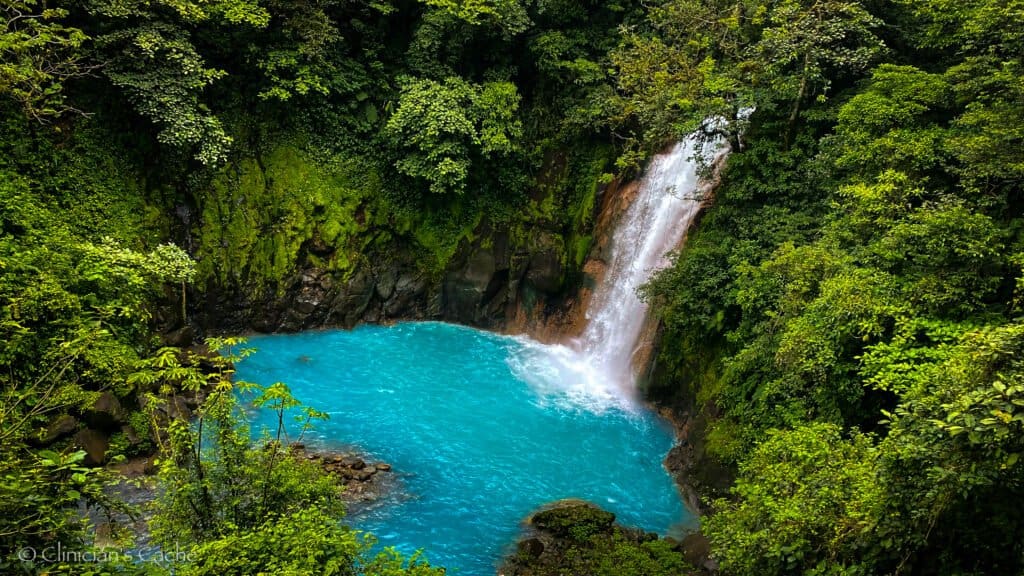
- Tropical Island Exploration (e.g., Dominica, Galapagos):
- Strong contrast in sensory experiences (quiet forests vs. crashing waves)
- Diverse visual input (colorful wildlife, lush vegetation, volcanic landscapes)
- Unique tactile experiences (volcanic sand, natural hot springs)
- Potential for olfactory overload near sulfur springs or mangroves

- Volcanic Landscapes (e.g., Iceland, Hawaii):
- Dynamic visual experiences (active lava flows, steam vents, unique rock formations)
- Strong olfactory input (sulfur smells, sea air)
- Varied tactile sensations (rough lava rock, smooth obsidian, warm geothermal areas)
- Potential for auditory overwhelm near active geothermal areas or ocean cliffs

Creating these profiles helps me anticipate and prepare for different sensory landscapes. But here’s the real trick: for each potential trigger, I try to identify a corresponding pleasure.
Take my trip to Istanbul. The Grand Bazaar, with its kaleidoscope of colors, sounds, and smells, could have been a recipe for sensory disaster. Instead, I turned it into a game of sensory exploration. I challenged myself to identify five new scents, find the softest textile, and discover the most intricate pattern. Suddenly, what could have been overwhelming became a treasure hunt for the senses.
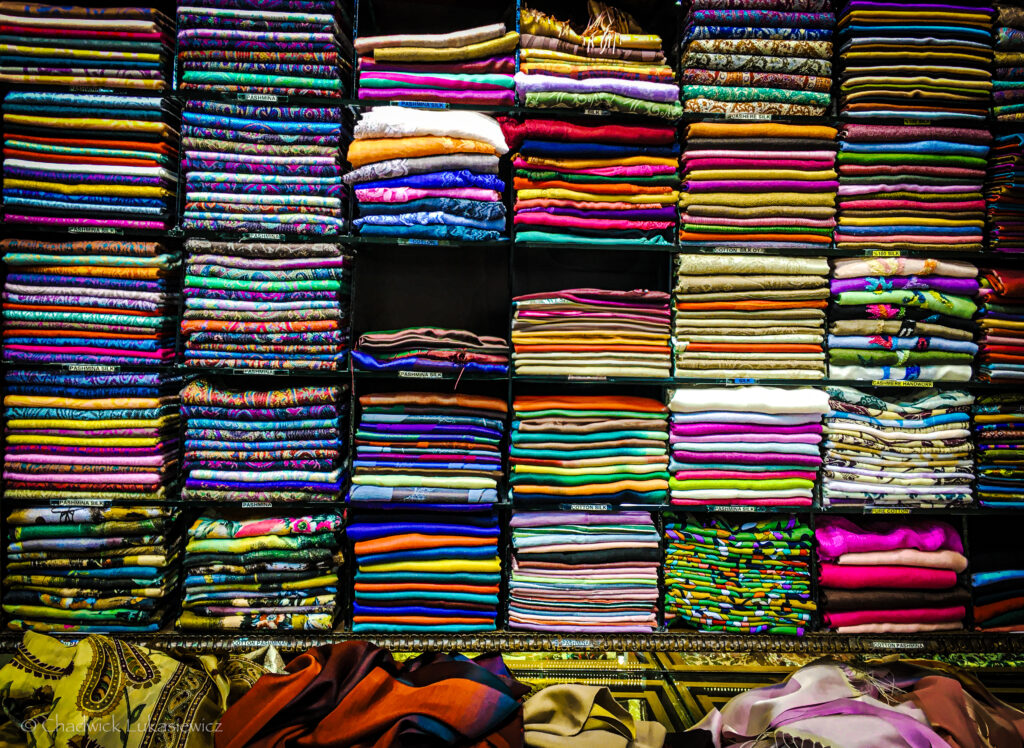
Practical Tips for Managing Sensory Input
Now, let’s talk practical tips for managing sensory input in bustling environments:
- Gradual Exposure: Start with short visits to high-input areas, gradually increasing duration.
- Strategic Timing: Visit popular spots during off-peak hours. Early mornings are great for this!
- Sensory Breaks: Plan regular retreats to quieter spaces. I always research nearby parks or quiet cafes.
- Noise-Cancelling Headphones: These are my non-negotiable travel item. They’re not just for planes – they’re for creating instant calm in any environment.
- Fidget Tools: Small, travel-friendly fidgets can provide a grounding tactile experience.

The Sensory Emergency Kit
But what about when things get too intense? This is where your “sensory emergency kit” comes in (Aron, 2016). Mine includes:
- Noise-cancelling earbuds (separate from my over-ear headphones)
- I go nowhere without my AirPods Pro
- Sunglasses (even for indoor use – great for reducing visual input)
- I recently got clip-ons for my prescription Ray-Ban…let me tell you…they are a real game changer in ease and portability.
- Travel-sized vial of my favorite cologne (don’t hate – sometimes a familiar scent is all you need to feel grounded… and hey, if you’re going to have a meltdown, might as well smell fantastic while doing it, right? )
- Alternative: a small vial of a calming essential oil (lavender is dope)
- Gum or chewy candy (oral stimulation can be very grounding)
- A soft, lightweight scarf or my personal favorite, a Buff (for tactile comfort or as an impromptu eye mask)
I keep this kit easily accessible at all times. It’s been a lifesaver in situations ranging from crowded subway rides in Tokyo to unexpected layovers in bright, noisy airports.
Finding Peace in Chaos
Now, here’s where we flip the script: finding peace in chaos. This is about more than just coping – it’s about discovering moments of zen in the most unlikely places.
One of my favorite techniques is what I call “Sensory Anchoring.” Choose one sensory input to focus on amidst chaos.
In the bustling streets of Shibuya, I focused on the rhythm of my own footsteps. In a crowded market in Kuala Lumpur, I honed in on the scent of Nasi lemak. This practice not only helps manage overwhelm but often leads to a deeper, more mindful experience of your surroundings.
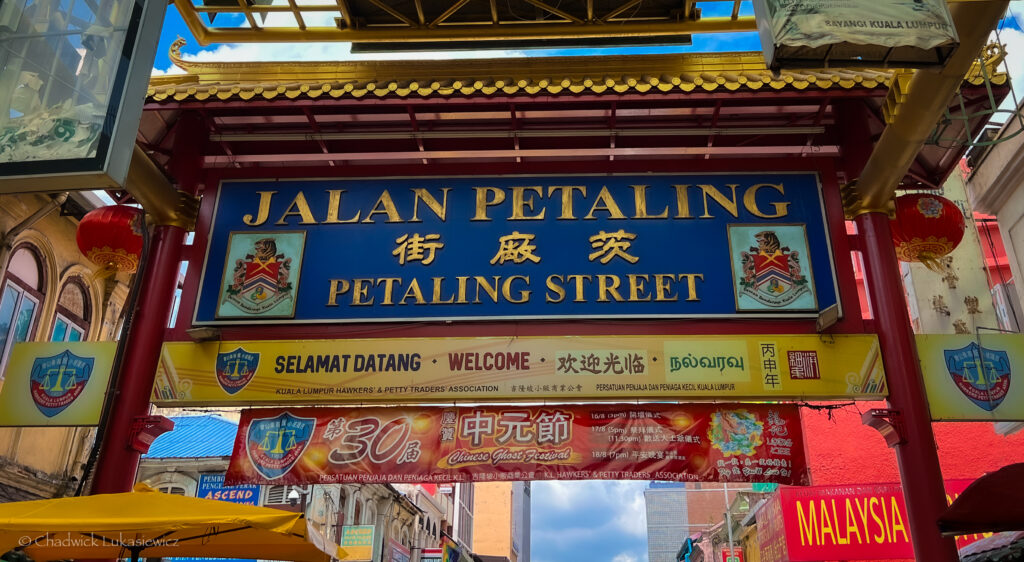
For my fellow AuDHD travelers, balancing the need for both stimulation and calm can be tricky. Here’s a strategy I’ve found helpful: the “Sensory Contrast“ approach. Intentionally pair high-input activities with low-input ones.
For example, after a morning exploring the vibrant streets of Kuala Lumpur, I retreated to peaceful KLCC Park to enjoy the Lake Symphony Water Fountain Light Show. The contrast heightens appreciation for both experiences.

Mindfulness Techniques for Neurodiverse Travelers
Mindfulness can be incredibly powerful for neurodiverse travelers (I promise it isn’t just an over-used cliche). But forget about trying to clear your mind – that’s often an exercise in frustration for our active brains. Instead, try this:
- The “5-4-3-2-1” Technique: Name 5 things you can see, 4 you can touch, 3 you can hear, 2 you can smell, and 1 you can taste. This grounding exercise works wonders in new environments.
- Body Scan Meditation: Focus on each part of your body sequentially. This is great for long flights or train rides.
- Mindful Photography: Use your camera (or phone camera…they kinda rock now) as a tool for focused attention. Challenge yourself to find beauty in small details.
Remember, the goal isn’t to eliminate all sensory challenges – that’s neither possible nor desirable. The richness of travel often comes from these intense sensory experiences. Instead, we’re aiming to build a toolkit that allows you to engage with these experiences on your own terms.
By embracing your unique sensory profile, you’ll not only navigate new environments more comfortably but also discover aspects of your destinations that others might miss. That heightened sense of smell might lead you to the best local bakery. Your sensitivity to texture could help you find the most authentic handcrafted souvenirs.
Learn more about how these principles translate to managing sensory input on the slopes.
Sensory-Friendly International Destination Spotlight
Time for the moment you’ve been waiting for – our top picks for destinations in 2025 that don’t just accommodate our unique brains but celebrate them! These are places where you can find both the stimulation and calm we crave, often in perfect harmony. So, grab your travel bag, and let’s explore some global hotspots that are practically tailor-made for our beautifully complex minds!
1. Tokyo, Japan: A Sensory Symphony
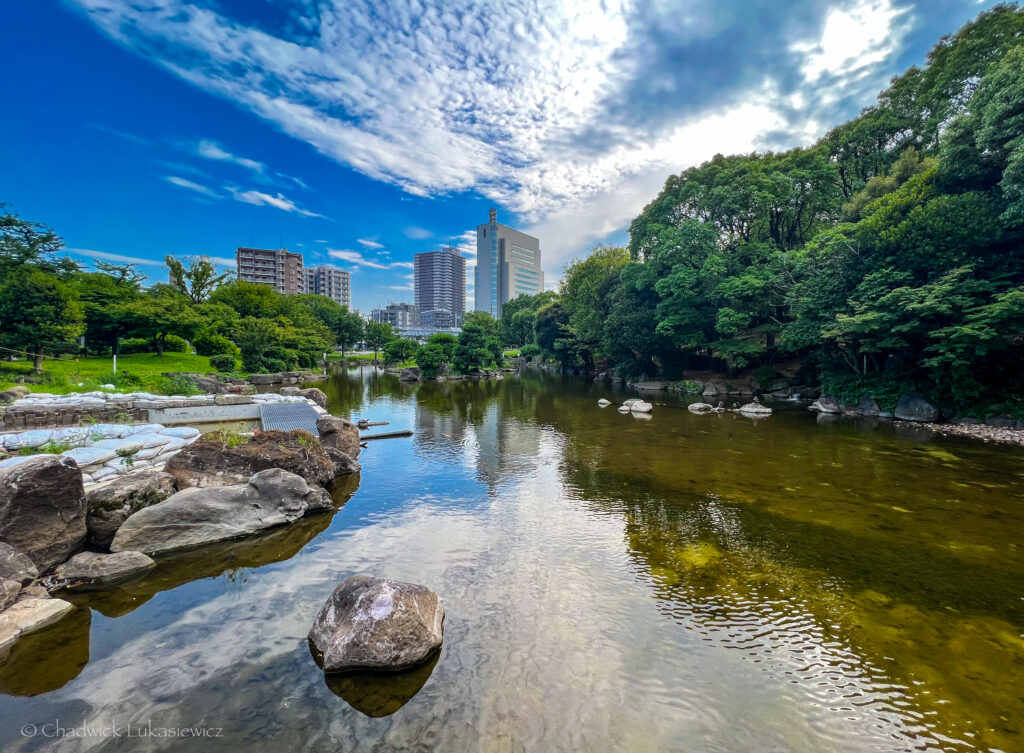
Why it works for us:
- Blend of high-tech stimulation and pockets of tranquility
- Efficient public transportation for easy navigation
- Rich in diverse sensory experiences
Personal experience: Tokyo was a playground for my ADHD brain. The organized chaos of Shibuya Crossing provided an exhilarating sensory rush, while the tranquil gardens of Shinjuku Gyoen offered a perfect retreat when I needed to recharge.
Must-visit for the neurodiverse traveler:- TeamLab Planets: An immersive digital art experience that’s a feast for the senses. There is nothing like it…do not miss this one!
- Tokyo DisneySea: Offers a more relaxed, sensory-friendly alternative to traditional theme parks. A fraction of the cost of US Disney Parks. Mediterranean vibes. Giant gyoza. It is fantastic.
Pro tip: Kyoto remains high on my travel wishlist for its perfect blend of historical richness and serene landscapes – an ideal combination for the neurodivergent traveler seeking both stimulation and calm.
2. Ubud, Bali: A Haven for Sensory Seekers and Avoiders

Why it works for us:
- Rich in visual and olfactory experiences
- Abundance of wellness activities for managing travel stress
- A culture that’s incredibly accepting of neurodiversity
Personal experience: Ubud was where I learned to embrace the paradox of my AuDHD brain fully. One moment, I was fully engaged in the organized chaos of a local market, my senses alive with the scents of spices and incense. The next, I was finding deep peace sipping on freshly brewed Luwak (yes, it’s that coffee) overlooking lush rice terraces.
Must-visit for the neurodiverse traveler:- The Sacred Monkey Forest Sanctuary: A beautiful example of controlled chaos – exciting and teeming with life, but with clear paths and rules that provide a sense of structure.
- Ubud Jazz Festival: An annual event offering a unique blend of musical stimulation and the relaxed Ubud vibe. One of the coolest experiences of my life. Highly recommend it.
3. Andermatt & Sedrun, Switzerland: Alpine Adventures for the Neurodivergent Soul

Why it works for us:
- Breathtaking natural scenery provides a calming backdrop
- Variety of winter sports for sensory-seeking thrill-chasers
- Well-organized Swiss infrastructure reduces travel anxiety
Personal experience: Snowboarding in the Swiss Alps was a revelation for my ADHD brain. The intense focus required for navigating the slopes provided a unique form of moving meditation, while the stunning mountain vistas offered a sense of peace I’d rarely experienced before.
Must-visit for the neurodiverse traveler:- Take the Glacier Express between Andermatt and St. Moritz for a sensory-rich journey through the Alps. Or take the train to Milan for a day trip!
- Bogn Sedrun: a wonderful wellness spa. Need I say more? Melt into relaxation after the slopes.
- Gütsch by Markus Neff: incredible gourmet restaurant on the slopes in Andermatt! One of the best splurge meals I have ever had.
4. Dominica: The Nature Island’s Neurodiversity-Friendly Charm

Why it works for us:
- Lush, unspoiled nature perfect for sensory exploration
- Less crowded than typical Caribbean destinations, reducing overwhelm
- Adventure activities that can help regulate sensory needs
Personal experience: Discovering the hidden gem of Chaudiere Pool was a moment of pure tranquility. As I stepped into the crystal-clear waters, surrounded by lush rainforest, my sensory-seeking brain found perfect balance. The gentle sound of the waterfall, the cool touch of the water, and the vibrant greens around me created a natural sensory room that soothed and invigorated simultaneously. Plus, those cute French girls shared their snacks.
Must-visit for the neurodiverse traveler:- Emerald Pool or the lesser-known Chaudiere Pool for a sensory-rich, peaceful nature experience.
- Snorkeling at Champagne Beach: Experience the unique sensation of bubbles rising from underwater volcanic vents, creating a natural jacuzzi effect that’s both soothing and exhilarating for sensory-seekers.
- Hike Boiling Lake: Challenge yourself with this strenuous trek that offers a huge sense of accomplishment and breathtaking views, perfect for ADHD minds craving both physical exertion and visual rewards.
- If you need a guide, my friend Chadi Symes is a rockstar! Hands down one of the best on the island.
5. Florence & Tuscany, Italy: A Feast for the Neurodivergent Senses

Why it works for us:
- Rich history and art for the detail-oriented mind (plus…the wine)
- Tuscan countryside offers a peaceful retreat from urban stimulation
- Italian culture’s relaxed pace can ease time-related anxieties
Personal experience: Exploring the Uffizi Gallery, my AuDHD hyperfocus kicked in, allowing me to spend hours absorbed in the intricate details of Renaissance masterpieces. Later, the rolling hills of Tuscany at the winery provided the perfect sensory break.
Must-visit for the neurodiverse traveler:- The Boboli Gardens offer a structured yet nature-rich environment to decompress.
- Piazzale Michelangelo provides a panoramic view of Florence, perfect for visual stimulation and quiet reflection.
- A Tuscan cooking class engages multiple senses and offers a structured way to immerse in local culture.
- Le Fonticine: Honestly…just stop whatever you’re doing. This restaurant is divine. Go. Get the Florentine steak. Harness your Shia LaBeouf…just do it!
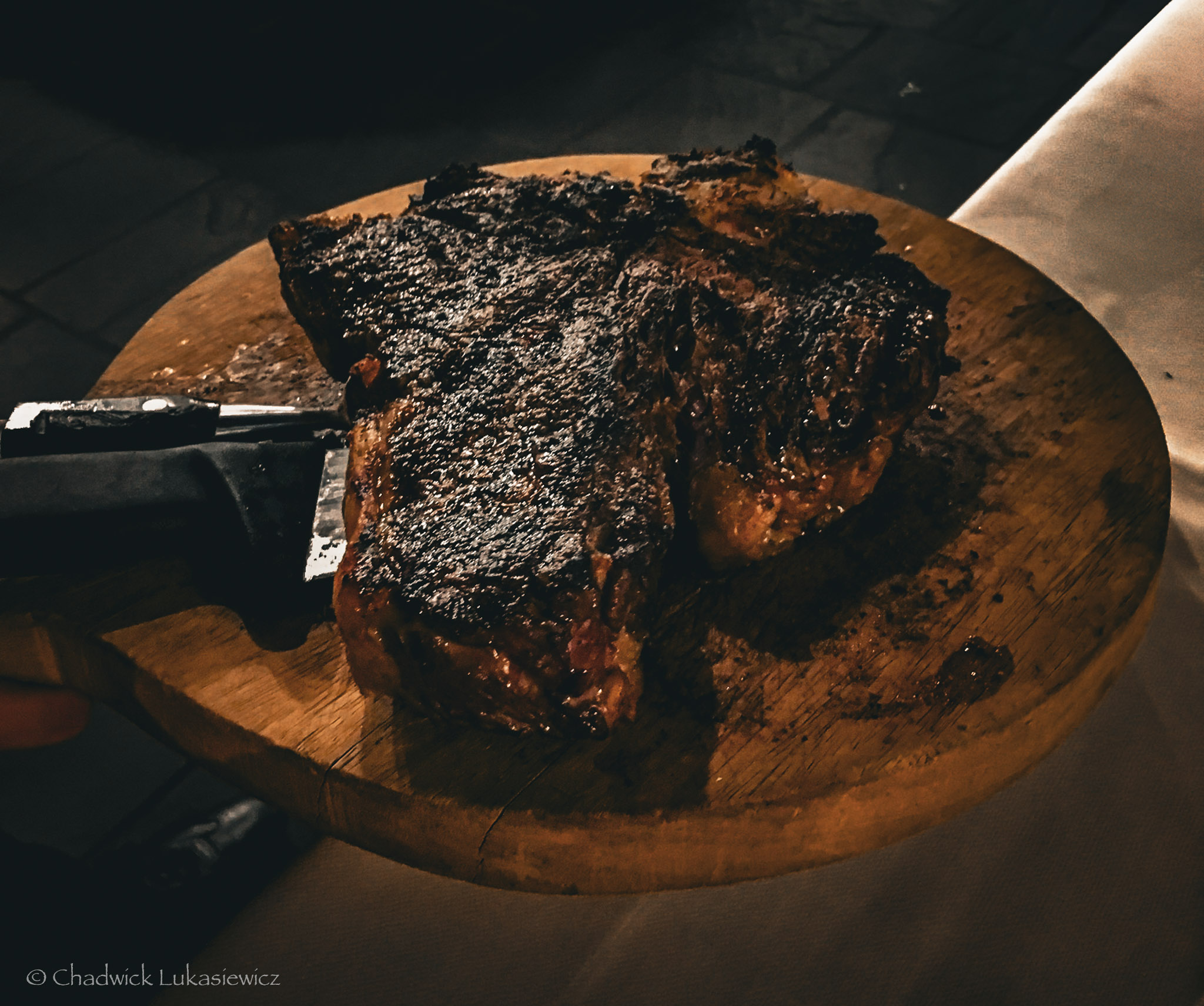

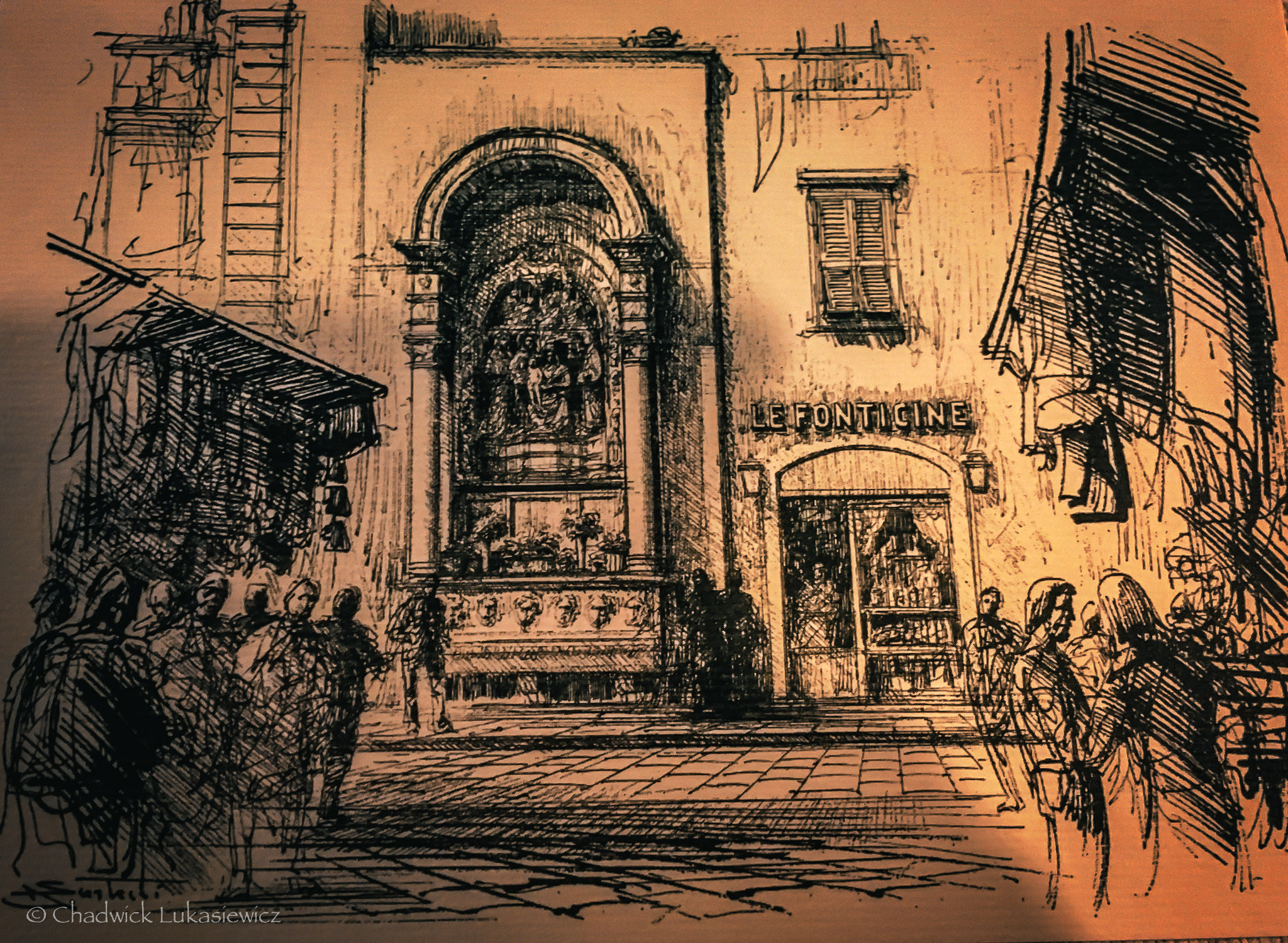
If Italy’s enchanting landscapes captivate your neurodivergent senses, don’t miss our ADHD-friendly exploration of Rome and Athens—ancient cities steeped in history and wonder.
On the Neurodivergent Travel Wishlist

While I haven’t personally visited these destinations yet, they come highly recommended by fellow neurodivergent travelers and have been thoroughly researched:
- Reykjavik, Iceland: Unique natural phenomena and a culture accepting of neurodiversity. The opportunity to experience the Northern Lights or soak in geothermal hot springs like the Blue Lagoon offers unparalleled sensory experiences in a calm, nature-centric environment.
- Barcelona, Spain: A sensory playground with Gaudí’s architecture and vibrant culture. The city’s unique blend of structured grid layout and whimsical architectural details offers a fascinating exploration for pattern-loving neurodivergent minds.
- Kyoto, Japan: The perfect blend of historical richness and serene landscapes. The city’s numerous temples and gardens, like the famous Zen rock garden at Ryoan-ji, provide ideal spaces for mindful reflection and sensory regulation.
- Queenstown, New Zealand: For adventure-seekers who also need moments of tranquility. The combination of adrenaline-pumping activities like bungee jumping and serene nature walks around Lake Wakatipu promises a perfect balance for the ADHD brain.
The most “friendly” destination is ultimately one that resonates with your unique sensory profile and interests. Use these suggestions as a starting point, but don’t be afraid to trust your instincts and explore places that call to your neurodiverse soul.
Extreme Adventures and Sensory Experiences for the Neurodiverse Explorer
Alrighty, thrill-seekers and riders, it’s time to kick things up a notch!
We’re talking extreme adventures and intense sensory experiences that’ll fill your chaotic mind with joy. Strap in, because we’re about to harness our neurodiverse superpowers for some serious adrenaline rushes – mindfully and safely, of course!

Did you know that ADHD is 3-4 times more common in elite athletes than in the general population? Studies show 7-8% of top athletes have ADHD, compared to just 0.8-2.4% of the public (Ekman, Hiltunen, & Gustafsson, 2021). Coincidence? I think not!
Our novelty-seeking, risk-loving brains are perfectly wired for these high-octane experiences. But it’s not just about the thrill – it’s about finding a unique form of focus and flow that can be incredibly centering for our often-scattered minds.
Snowboarding: A Neurodiverse Nirvana
Let’s start with my personal favorite: snowboarding in the Swiss Alps. Oh boy, do I have a story for you about this one!
Picture this: It’s my first run down a pristine slope of the Gemsstock in Andermatt, Switzerland. The crisp alpine air fills my lungs, the panoramic views overwhelming my senses in the best possible way. As I strap on my board, my usually hyperactive ADHD brain zeroes in with laser focus.
The rest of the world fades away, and for once, my mind is blissfully quiet. Each carve brings simultaneous peace and thrill.

Here’s the thing – this moment (one of my few true life dreams) almost didn’t happen. After two major spine surgeries (a microdiscectomy at 24 and a lumbar fusion at 25), I thought my snowboarding days were over. The journey back to the slopes was as much a mental challenge as a physical one.
Quick shoutout to my friend Emily. That first season back was rough. Your friendship and encouragement were instrumental in my recovery and finding my riding legs again. Thanks, friend; honestly, more than you’ll ever know. Keep being a badass adventurer with twins!

But let me tell you, that first ride down the mountain was more than just fun – it was healing. It was a powerful reminder of our neurodiverse brains’ incredible capacity for resilience and adaptation.
Why Extreme Sports (like Snowboarding) Work for Neurodivergent Minds

- Sensory Engagement: Snowboarding is a full-body, multi-sensory experience. The feel of carving through powder, the visual rush of the landscape whizzing by, the sound of your board cutting through snow (or killer tunes) – it’s sensory input at its finest, providing the kind of intense stimulation our ADHD brains often crave (Schulze et al., 2020).
- Hyperfocus Heaven: Remember how we talked about harnessing hyperfocus? Extreme sports are the perfect outlet. When you’re flying down a mountain at high speed, your brain has no choice but to zero in on the present moment. It’s like meditation in motion!
- Confidence Booster: Mastering a challenging sport can do wonders for self-esteem, especially for those of us who might struggle in more traditional areas. Landing that first jump or successfully navigating a difficult run? Pure dopamine gold for our reward-seeking brains.
- Anxiety Management: Counterintuitive as it might seem, the controlled risk of extreme sports can actually help manage anxiety. It’s a powerful way to confront fears in a controlled environment.
- Social Connections: The extreme sports community is often incredibly accepting of neurodiversity. It’s a place where our quirks and intense passions are not just tolerated but celebrated.
Mindful Strategies for Extreme Adventures

So, here’s the thing – it’s not just about the adrenaline rush. It’s about learning to harness that intensity mindfully. Here are some strategies I’ve developed to make the most of extreme adventures:
- Pre-Adventure Grounding: Before hitting the slopes, I use a quick EMDR-inspired technique. I focus on the physical sensation of my feet in my boots while doing bilateral stimulation (usually tapping my thighs alternately). This helps center my mind and reduce any pre-ride anxiety that still creeps up about my spine.
- Sensory Check-Ins: Throughout the day, I do quick body scans. How does the cold air feel on my face? What’s the texture of the snow under my board? This keeps me present and helps prevent sensory overload.
- Mindful Lift Rides: Ski lifts can be anxiety-inducing for some (hello, heights!). Use this time for breathwork, syncing your breath with the sway of the lift. It’s a mini-meditation session with a view!
- Photography Breaks: As an avid photographer, I’ve found that taking photos on the mountain is another form of mindfulness. It forces me to pause, really see my surroundings, and appreciate the beauty around me.
Diving into Water Sports
Water sports offer a unique sensory paradise for our neurodiverse brains. Let’s explore a few:
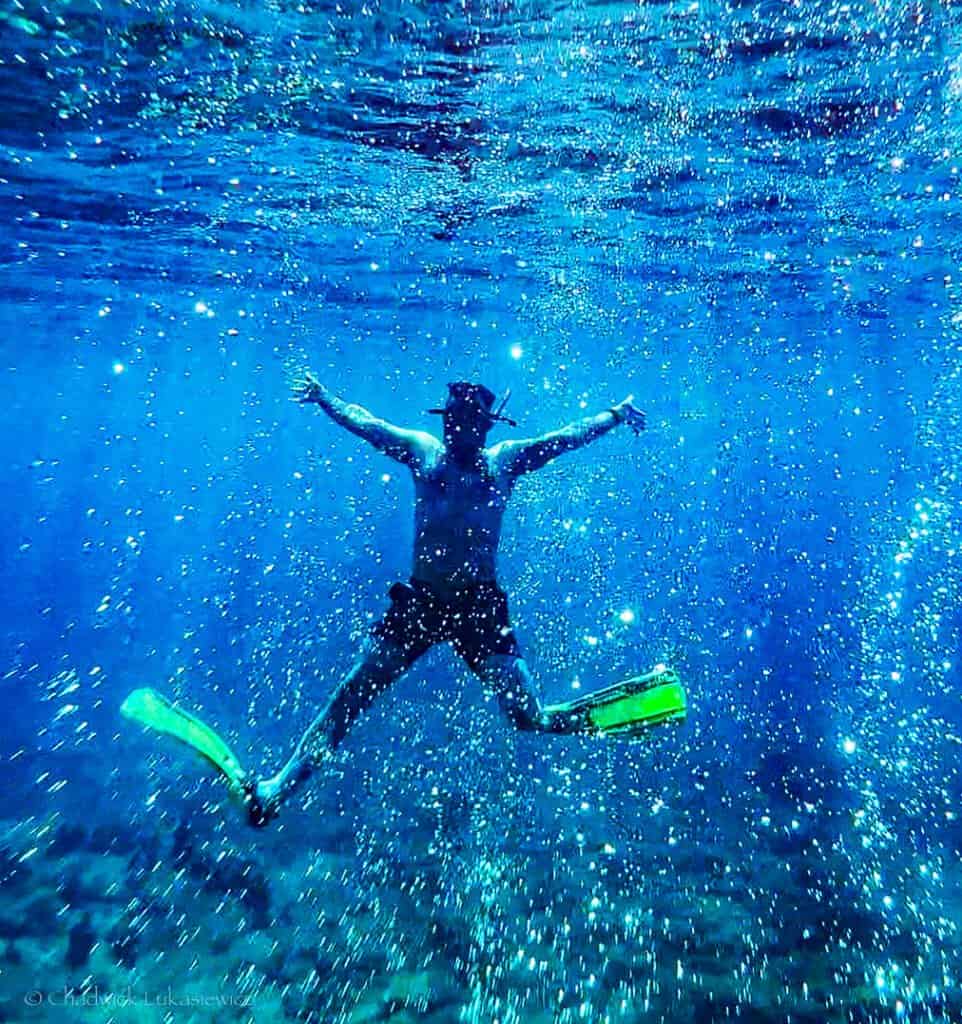
Wakeboarding and Water Skiing
The rush of skimming across the water’s surface is like a full-body fidget toy for our ADHD minds! The hyperfocus required to find that perfect edge creates moments of pure, uninterrupted focus.
Surfing
Surfing demands presence, patience, and pattern recognition – perfect for engaging both ADHD spontaneity and autistic attention to detail. It offers a unique mindfulness experience, syncing your movements with the ocean’s rhythm.
Snorkeling and Scuba Diving
These offer an underwater wonderland of sensory delights. I’ll never forget my snorkeling experience at Champagne Beach in Dominica. As I floated above the volcanic bubbles rising from the sea floor, my usually racing thoughts slowed to match the lazy drift of the tropical fish below. The gentle pressure of the water, combined with the otherworldly visual feast, created a sensory experience that was both calming and exhilarating for my neurodiverse brain.
Other Extreme Sports to Explore
- Rock Climbing: Great for problem-solving skills and body awareness.
- Mountain Biking: Combines the thrill of speed with the peace of nature.
Remember, the goal isn’t to be the most extreme or take unnecessary risks. It’s about finding activities that challenge you, engage your senses fully, and bring you into that beautiful state of flow that our neurodiverse brains so often seek.
Whether you’re shredding powder in the Swiss Alps, ziplining through the Costa Rican raniforest, or catching waves in Bali, extreme sports can be a powerful tool for managing our neurodiverse minds. They teach us to channel our intensity, face our fears, and find joy in pushing our limits.

So, the next time someone suggests you need to “calm down” or “focus more,” just smile and tell them you’re saving that energy for your next big adventure.
After all, sometimes the best way to find balance is to strap on a board and embrace the beautiful chaos of the mountain or the waves.
The Art of Flexible Travel: Embracing Spontaneity and Maintaining Routine
Ah, the paradoxical dance of structure and spontaneity – a challenge that’s all too familiar for us neurodiverse travelers. How do we satisfy our ADHD craving for novelty while maintaining the routines that keep our AuDHD or Autistic brains functioning smoothly?
Let’s dive into the art of flexible travel, where missed connections become midnight adventures and rigid plans transform into opportunities for growth.
Balancing Structure and Flexibility
The key to neurodiverse-friendly travel lies in creating a framework that’s sturdy enough to provide security, yet flexible enough to accommodate the unexpected. Here are some strategies I’ve found invaluable:
- The Anchor Point Method: Instead of planning every hour, choose one key activity or location for each day. This provides structure without suffocating spontaneity (Barkley, 2020; Brown, 2013).
- Time Blocking with Buffers: Allocate chunks of time for activities, but leave buffer zones between them. These buffers are your spontaneity playgrounds!
- The 60/40 Rule: Plan about 60% of your trip in advance, leaving 40% open for serendipitous discoveries or ADHD-inspired detours.
- Routine Anchors: Maintain 2-3 small daily routines (e.g., morning workout, meditation, evening journaling) to provide consistency amidst changing environments.
Tools and Apps for Neurodiverse Travelers
Our smartphones can be powerful allies in managing time and staying on track. Here are some neurodivergent and ADHD-friendly apps I swear by:
- Notion: An all-in-one workspace for visual trip planning, note-taking, organizing ideas, and pretty much anything. This app continues to replace others and help me consolidate every year.
- Fantastical: Excellent for time blocking and managing schedules with a user-friendly interface. Tons of great integrations available.
- Also try: Motion for AI-driven automated scheduling and task management.
- Things 3: A powerful yet intuitive to-do list and project management app with a clean interface, natural language input, and deadlines with reminders.
- ExpressVPN: Ensures robust online privacy and security while traveling, providing peace of mind by protecting your data on public Wi-Fi. Plus, it enables access to your favorite streaming services and geo-restricted content. Perfect for maintaining familiar routines or unwinding after a day of adventures.
- Headspace: Perfect for quick mindfulness breaks, managing travel anxiety, and phenomenal sleep resources. I use the Soundscapes nearly every night.



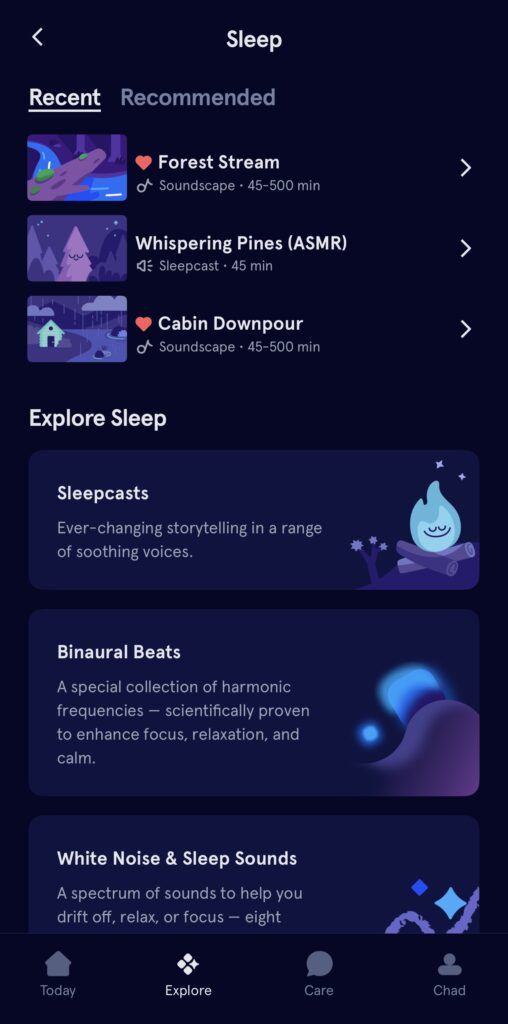
Some great alternative choices:
- Trello: Great for visual trip planning and easily rearranging itineraries.
- TimeBloc: Perfect for time blocking with a neurodivergent-friendly interface.
- Calm: For those moments when you need a quick mindfulness break.
- Evernote: Capture spontaneous ideas and easily organize travel notes.
- NordVPN: A reliable alternative to ExpressVPN, offering robust security features and access to global streaming platforms.
Remember, these tools are meant to support your journey, not constrain it. Use them as a safety net, not a cage.
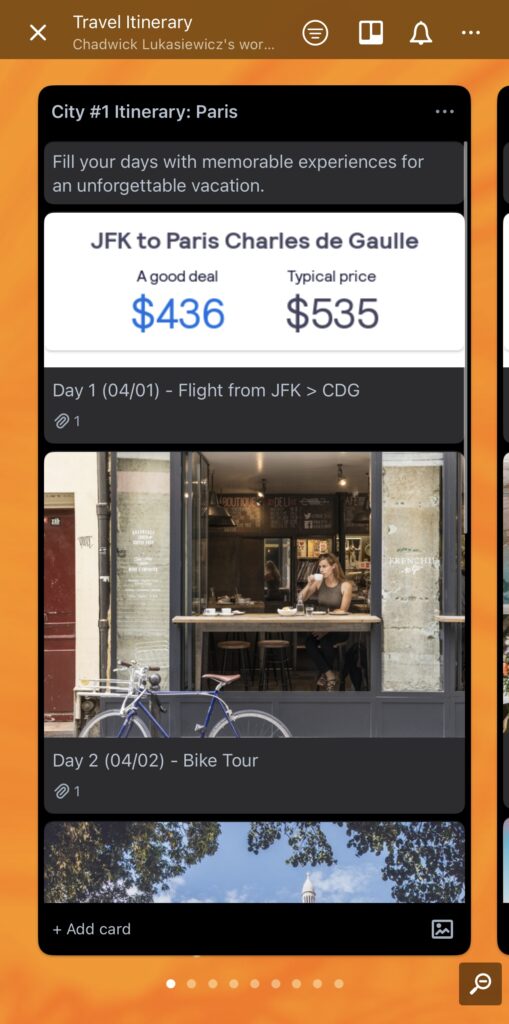



Turning Travel Mishaps into Adventures
Now, let me share a personal story that illustrates the beauty of embracing the unexpected – my Swiss Midnight Adventure.
The Swiss Midnight Adventure: A Lesson in Neurodiverse Resilience
It all started with an ambitious plan: flying from Denver to London, squeezing in some sightseeing, then catching a flight to Zurich and trains to my final destination in the Swiss Alps. Classic ADHD overplanning, right?
Things went smoothly at first. I landed in London, my ADHD excitement on full throttle as I raced through the city. Made it back to Heathrow and to Zurich. Nearly time to fulfill that lifelong dream of snowboarding the Alps…

But then came the setbacks:
- A train breakdown forced a swap, making me miss my last connection…by minutes.
- I couldn’t make it all the way to my intended destination, Sedrun.
- The trains stopped running for the night, leaving me stranded in a small town.
- All hotels were closed, classic Swiss small-town style.
Now, this is where many travelers might panic. But for my ADHD brain? It was time to problem-solve and explore!
The Unexpected Solution: A kind local helped me call a taxi from the city. While waiting, I stashed my bags safely on a hidden balcony (don’t try this at home, folks) and set out to explore the sleeping town.
The Midnight Exploration: What followed was a cold but magical midnight walk through empty streets. The stars above were so bright but contrasted with such tall mountain peaks that you nearly had to look straight up to see them. The cold alpine air was invigorating, heightening every sense.
The Reward: As dawn broke, I witnessed one of the most breathtaking sunrises of my life. The first rays of sun painting the towering peaks in hues of gold and pink – a sight I would have missed if everything had gone according to plan. The entire valley and town that I had explored in darkness, lighting up before my eyes.
The Heartwarming Conclusion: As the town began to wake, I encountered a kind grandmother who, despite our language barrier, understood my predicament. Through gestures and smiles, she guided me to a cozy café where I could warm up and wait for my next train.

Lessons from the Midnight Adventure
- Embrace the Unexpected: Some of the most memorable experiences come from unplanned moments.
- Stay Calm and Problem-Solve: When plans go awry, take a deep breath and tackle one issue at a time.
- Find Beauty in Chaos: Even in stressful situations, there’s often unexpected beauty to be found. What can you find that most miss?
- Connect Despite Barriers: Kindness and a smile can bridge any language gap. Translator apps are great…but sometimes your phone is dead.
- Reframe “Disasters”: What seems like a travel mishap can become the highlight of your trip.

Balancing ADHD Stimulation and AuDHD Needs
Traveling with ADHD or AuDHD presents a unique challenge: balancing the need for stimulation with the need for routine and calm (Ghirardi et al., 2019).
Here are some techniques to help:
- Stimulation Sandwiches: Plan high-energy activities between calmer ones.
- Sensory Cool-Down Kit: Carry items like noise-cancelling headphones or a favorite textured toy for quick sensory regulation.
- Mindful Transitions: Use short mindfulness exercises when switching between activities.
- Dopamine Scheduling: Plan small, exciting events throughout your day to keep your ADHD brain engaged.
Remember, we aren’t trying to eliminate all uncertainty from your travels. It’s about creating a flexible structure that allows you to navigate the unexpected with confidence and joy.
By embracing both spontaneity and routine, we can turn our neurodiverse traits into travel superpowers, finding beauty in the chaos and growth in the challenges.
Mastering the Art of Flexible Long-Term Travel
Whether you’re embarking on a gap year, a sabbatical, or embracing the digital nomad lifestyle, extended trips present unique challenges and opportunities for us. But fear not! With the right strategies, your neurodiverse brain can become your secret weapon for creating a sustainable, joy-filled journey.
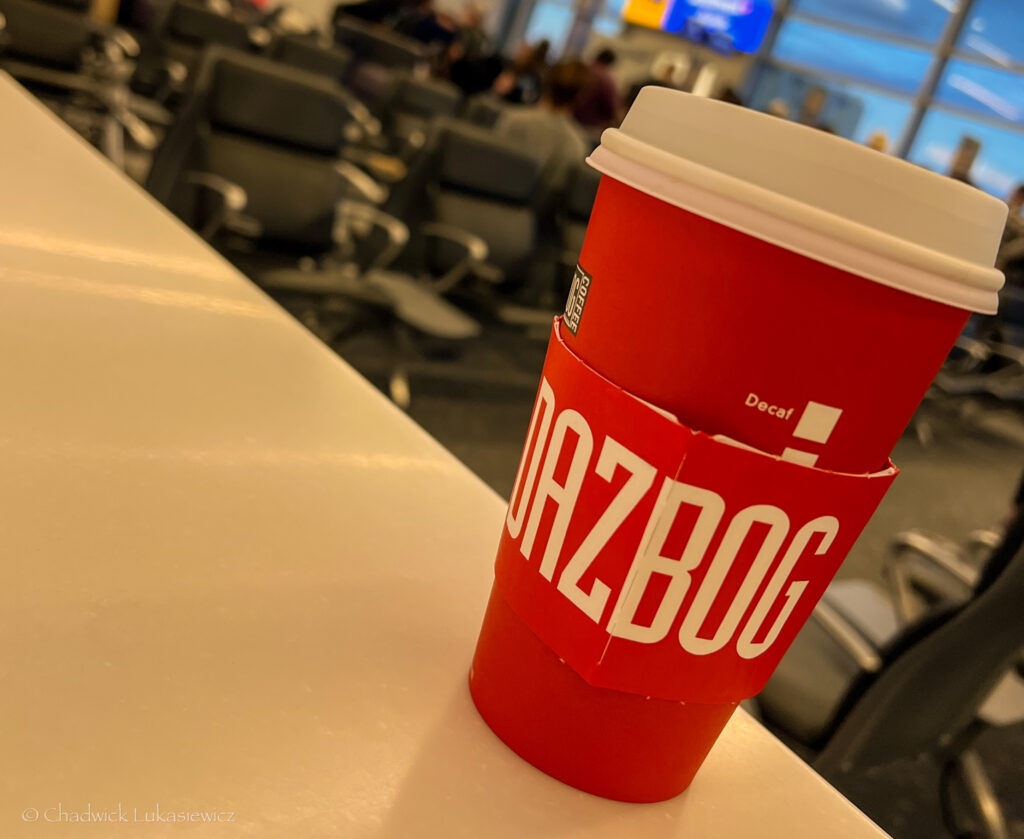
Let’s start with the elephant in the room: balancing work, exploration, and self-care when your office is the world. As someone who’s turned “working from anywhere” into an art form (and occasionally a comedy of errors), I’ve got some hard-earned wisdom to share.
Creating Your Mobile Workspace
First things first: creating a mobile workspace that vibes with your neurodiverse needs. For me, it’s noise-canceling headphones (AirPod Pros) in with a specific playlist, typing on my MacBook Pro, Traveler’s Journal by my side, and (insert Snape’s “obviously”) a trusty fidget item. I can recreate this setup whether I’m in a Bali beach hut or a Parisian café, giving my brain the consistency it craves amidst changing surroundings.
But here’s the real trick: establish a “work uniform” for your brain. This isn’t about clothes, but about creating a consistent sensory environment that signals “work mode” to your neurodiverse mind.
Establishing Portable Habits
Now, let’s talk about the holy grail of long-term travel: creating sustainable routines while embracing unpredictability. Sounds like an oxymoron, right? Not for our adaptable neurodivergent brains!
The key is to establish what I call “portable habits” – small, consistent practices that ground you, regardless of location. Mine include a 10-minute morning meditation, bodyweight workout, and an evening review of my next day (usually followed by a before-bed sesh on my Nintendo Switch).
These habits become anchors, providing the structure our brains crave while allowing flexibility in everything else.
Managing Impulsivity and Need for Routine
But what about when ADHD impulsivity or Autistic need for sameness threatens to derail your plans? This is where the “yes, and” approach comes in handy. Instead of fighting these traits, work with them.

For example, when my ADHD brain suddenly decided it was imperative to change my plans and visit a remote cave temple that you have to crawl into on Nusa Penida island (at 10 PM the night before), I didn’t shut down the impulse.
Instead, I said “Yes, AND let’s look at how this fits into our overall itinerary and budget.” This approach allows for spontaneity while maintaining a sense of control.
Budget Management for Long-Term Travel
Speaking of budget – let’s address the pains of finance. Long-term travel requires some serious money management skills, which, let’s be honest, isn’t always our forte. Here’s where our detail-oriented AuDHD traits can shine!
I swear by the “envelope system,” but with a digital twist. I use an app that allows me to create virtual envelopes for different spending categories. The visual representation helps my ADHD brain grasp my financial situation at a glance, while the detailed tracking satisfies my autistic need for order.
A game-changing tip: set up automatic transfers to a “future adventures” fund. This not only helps with budgeting but also gives our novelty-seeking brains something to look forward to, making it easier to stick to our financial plans.
Here’s another budget-savvy strategy: plan your length of stay based on the cost of living in different destinations. For instance, during my Asia trip, I discovered that extending my stay in Bali was significantly more affordable than spending extra time in Japan.
By allocating more days to budget-friendly locations, you can stretch your travel funds and potentially experience a wider variety of cultures. This approach not only saves money but also allows our neurodiverse brains more time to acclimate and deeply explore each destination.
Maintaining Relationships on the Road

*Fun Fact: This is the Filming Site for Calypso’s House in Pirates of the Caribbean Dead Man’s Chest
Now, let’s talk about one of the biggest challenges of long-term travel: maintaining relationships and combating loneliness. Our neurodiverse minds often struggle with consistent communication (or at least feeling understood), but they also crave deep connections.
Here’s how to navigate this:
- Schedule regular check-ins with loved ones, but make them flexible. I use a “communication window” approach – for example, I’ll call my family sometime between 6-8 PM on Sundays (or just blow them up with photos for the morning if I am in Asia). This gives me the structure I need without feeling trapped by a specific time.
- Find your tribe on the road. Look for neurodiverse-friendly meetups or co-working spaces in each destination. I’ve found some of my closest friends at ADHD support groups in the most unexpected places!
- Be honest about your needs. It’s okay to tell new travel buddies that you need alone time to recharge or that you might forget to reply to messages sometimes. Authenticity attracts the right people.
- Call or FaceTime a friend randomly! I think I FaceTimed by best friend and two of my coworkers at the time during my first few runs in the Alps…yes, literally riding down the mountain holding my phone up like check this out!
Self-Care During Long-Term Travel
Lastly, let’s chat about the importance of self-care during long-term travel. It’s easy to get caught up in the excitement and forget our basic needs, especially with ADHD time blindness or autistic sensory overload.
Create a “non-negotiable” self-care checklist. Mine includes a brief workout, getting at least 7 hours of sleep, and spending time in nature every day. I use a habit-tracking app to keep myself accountable – those little green checkmarks are oddly satisfying to my AuDHD brain!

Remember, long-term travel isn’t about seeing everything or being constantly on the move. It’s about creating a lifestyle that allows you to experience the world in a way that aligns with your neurodiverse needs and values.
Some days, that might mean conquering a new city. Other days, it might mean spending hours in a cozy café, working or simply observing local life.
The beauty of long-term travel for us neurodiverse adventurers is that it gives us the time and space to find our rhythm, to discover how our unique brains interact with the world in different contexts. It’s a journey of self-discovery as much as it is a physical journey around the globe.
Navigating Complex Travel Logistics with a Neurodiverse Brain
Let’s tackle the beast that often sends our neurodivergent brains into a tailspin: complex travel logistics. From multi-stop itineraries to budget-friendly bookings, we’re about to turn your executive functioning challenges into planning strengths!
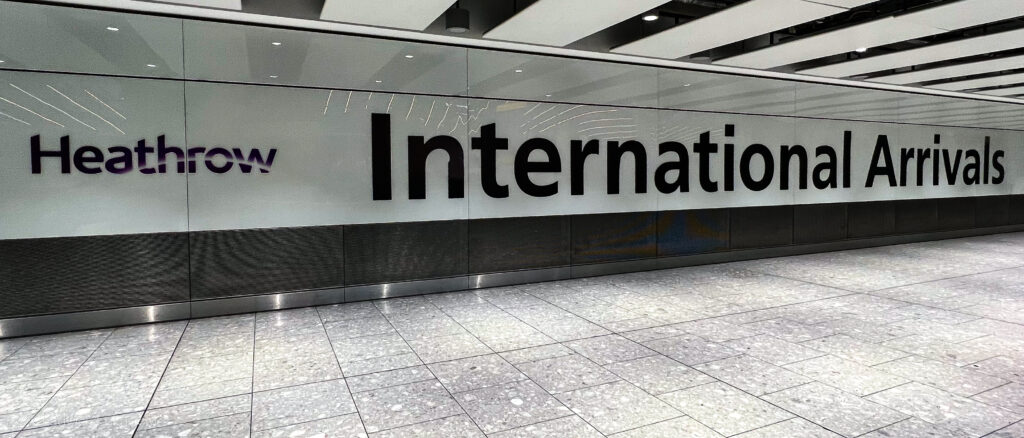
Mastering Multi-Stop Itineraries
For those of us with ADHD, planning a trip with multiple destinations can feel like trying to solve a Rubik’s cube while riding a unicycle. But fear not! Here are some strategies to make it manageable:
- Visual Planning: Use tools like Notion or Trello to create visual maps of your itinerary. Our neurodiverse brains often thrive on visual information!
- The 2-2-2 Rule: When planning multi-city trips, try to stay at least 2 nights in each place, have no more than 2 travel days in a row, and take a 2-day break every 2 weeks for rest and processing.
- Transition Days: Schedule a low-key day after each travel day. This gives your sensory system time to adjust to new environments.
- Color Coding: Assign a color to each destination in your plans. This helps your brain quickly process changes and transitions.
Budget-Friendly Booking Strategies
Now, let’s talk about stretching those travel dollars. As someone who’s traveled on a shoestring budget (hello, post-grad adventures!), I’ve got some neurodiverse-friendly money-saving tricks up my sleeve:
Flight Booking Tools
- Skyscanner: This is my go-to for finding budget flights. Their ‘Everywhere’ feature is perfect for ADHD spontaneity – just enter your departure airport and see where you can go for cheap!
- Kayak: I love their ‘Explore’ map for visual planners. It’s like a treasure map for flight deals!
- Google Flights: Great for flexible date searches, which is perfect when your ADHD brain suddenly decides you absolutely must go to Japan… next week.

Money-Saving Tips
- The 3-Day Rule: Due to our impulsivity, it’s easy to book the first deal we see. Instead, set a 3-day research period before booking. Use a price tracker to monitor fluctuations.
- Reward Point Hyperfocus: Channel your ADHD hyperfocus into learning about travel reward programs. I once spent an entire weekend optimizing my credit card points and ended up with a free roundtrip flight to Europe!
- Cash-Back: Use simple Cash-Back programs like Rakuten or Honey by PayPal when purchasing anything online. They are free and simple to use while providing extra travel/spending money!
- Off-Season Adventures: Our neurodiverse brains often appreciate quieter, less crowded environments anyway. Traveling off-season can save you money and sensory overload.
- Flexibility Jackpot: Use tools like Skyscanner or Airbnb’s flexible date search and explore feature. Being open to shifting your travel dates by a few days can lead to significant savings.
Executive Functioning Hacks for Smoother Travel
Let’s face it, executive dysfunction is often our nemesis more than we’d like to admit. But with these hacks, you’ll navigate travel logistics like a pro:
- The “Everything” Document: Create one master document with all your travel info: bookings, addresses, confirmation numbers. Share it with a trusted person back home. Keep a back up copy securely in your luggage.
- Arrival Day Checklists: For each new destination, create a simple checklist: how to get from the airport/station to your accommodation, check-in instructions, nearby food options.
- Daily Departure Alarms: Set alarms not just for wake-up times, but for when you need to start getting ready to leave. Buffer in extra time for ADHD time-blindness!
- The “Go Bag” System: Pack a small bag with essentials (medications, chargers, snacks) that always stays with you. This reduces anxiety about forgetting crucial items.
Leveraging Technology for Neurodiverse Travelers
Our smartphones can be powerful tools for managing travel complexities:
- TripIt: Automatically organizes all your travel documents into one itinerary. It’s like having a personal assistant in your pocket!
- Currency Pro or XE Currency: For quick currency conversions, essential for budgeting on the go.
- Apple Translate or Google Translate: Download offline language packs before your trip. The camera translation feature is a game-changer for menus and signs!
- Splitwise: Great for group trips, it helps keep track of shared expenses – perfect for when ADHD makes mental math a challenge.
Coping with Travel Day Overwhelm
Travel days can be sensory overload central. Here are some strategies to stay grounded:
- Sensory Comfort Kit: Pack noise-cancelling headphones, sunglasses, and a soft scarf or weighted lap pad for grounding.
- Waiting Game: Have a specific ‘waiting activity’ (e.g., a puzzle or simulation game on your phone, a kindle book) that you only do in transit. It gives your brain a familiar focus point. Hello, Stardew Valley!
- Movement Breaks: Set reminders to move every hour during long journeys. Simple stretches or a walk up and down the airplane aisle can help regulate your system.
- Mindful Mantra: Create a short, calming phrase to repeat during stressful moments. Such as, “I am safe, I am capable, I’ve got this.”
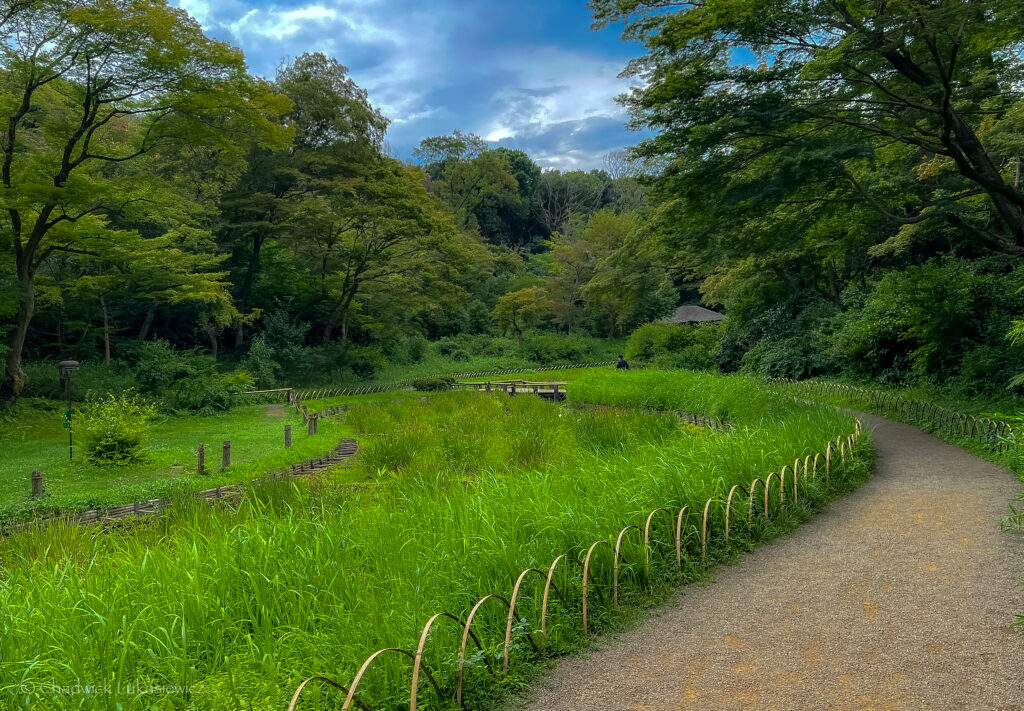
Complex travel logistics aren’t just challenges to overcome – they’re opportunities for our neurodiverse brains to shine. Your ADHD creativity might find an unconventional route that saves time and money. Your autistic attention to detail could spot a mistake in bookings that others might miss.
By embracing our unique way of processing information and using tools that work with our brains, not against them, we can turn travel planning from a source of stress into an exciting part of the adventure.
Building a Global Neurodiverse Community
Alright, my fellow neurodivergent globetrotters, it’s time to talk about one of the most rewarding aspects of travel: connecting with kindred spirits around the world. As someone who’s found lifelong friends in the most unexpected corners of the globe, I can tell you that building a global neurodiverse community isn’t just possible – it’s one of the most enriching experiences you can have.

Finding Your Neurodiverse Tribe Worldwide
Remember that feeling when you first discovered you weren’t alone in your neurodivergence? Now imagine experiencing that connection in Tokyo, Timbuktu, or Tuscany! Here’s how to find your people:
- Neurodiversity Meetups: Platforms like Meetup.com often have ADHD or ASD groups in major cities.
- Co-working Spaces: Many digital nomad-friendly co-working spaces are havens for neurodiverse professionals. The structured environment with a social aspect is perfect for our AuDHD brains.
- Online Communities Gone Offline: Join online forums or Facebook groups for neurodivergent travelers, then arrange meetups when you’re in the same city.
- Neurodiversity-Friendly Retreats: Look for travel experiences designed with neurodivergent folks in mind. Yoga retreats, mindfulness workshops, or even ADHD coaching vacations can be great ways to meet like-minded travelers.
Organizing Neurodiverse-Friendly Events on the Road
Why not take the initiative and create the events you want to see? Here are some ideas:
- Sensory-Friendly City Tours: Organize a small group tour that includes quiet spots for breaks and avoids overwhelming areas.
- ADHD-Friendly Adventure Days: Plan activities that cater to our need for novelty and stimulation, like an escape room challenge or a parkour class.
- Neurodiverse Game Nights: Host a board game evening at your hostel or Airbnb. It’s a great, low-pressure way to socialize.
Remember, these events don’t have to be big or formal.
Harnessing Social Media and Travel Forums
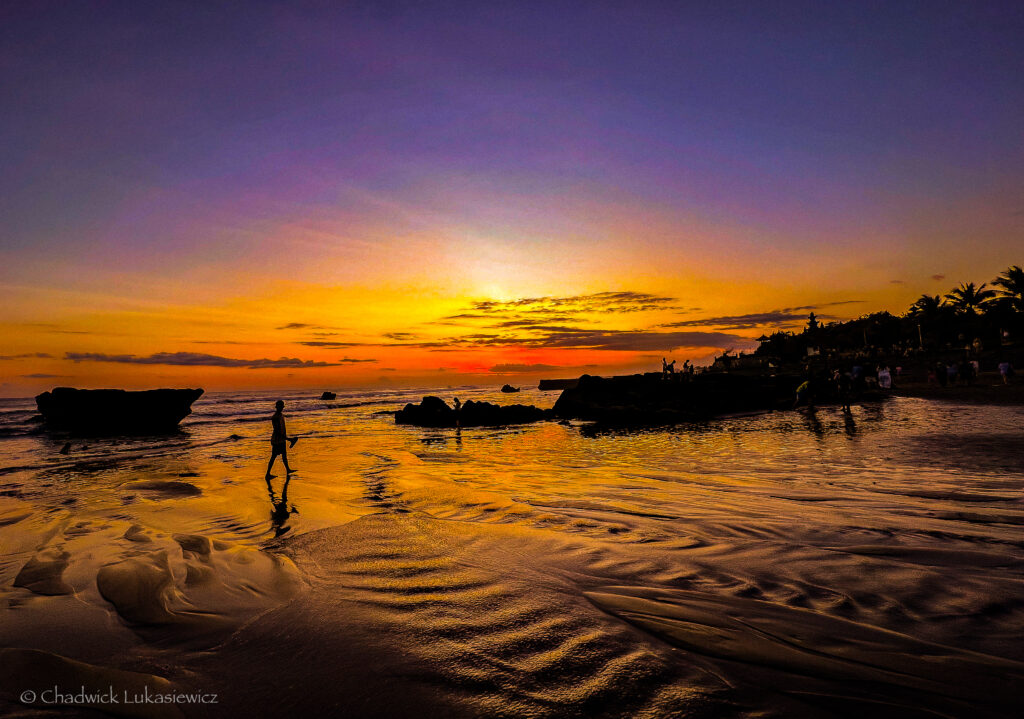
Social media isn’t just for sharing envy-inducing travel photos (though we do love a good sunset pic!). It’s a powerful tool for connecting with the global neurodiverse community:
- Instagram: Use hashtags like #NeurodiverseTravel, #ADHDtravelers, or #AutisticAdventures to find and connect with others. It can also be a goldmine of tips and tricks!
- Pinterest: Create boards dedicated to neurodivergent travel tips, sensory-friendly destinations, and travel gear for ADHD/ASD adventurers. Use descriptive, keyword-rich pin titles and descriptions to increase visibility. It’s an excellent platform for visual planners and those who love to curate travel inspiration!
- X (formerly Twitter) Follow neurodivergent travel bloggers and join conversations in Communities, Spaces, or by using relevant hashtags. It’s great for real-time travel tips and community features.
- Plus, if you have Premium you get access to Grok, which is really useful and hysterical on “fun mode.”
- Reddit: Subreddits like r/ADHDtravelers or r/AutisticTourists (note: I made these up, but similar communities exist!) can be goldmines of tips and connections…or Reddit trolls.
- TikTok: Share your travel hacks and quirky observations. The algorithm often connects you with like-minded creators.
- Pro tip: Create a travel-specific account to share your journey. It’s a great way to document your adventures and connect with others without overwhelming your personal feed.
Navigating Social Interactions Across Cultures
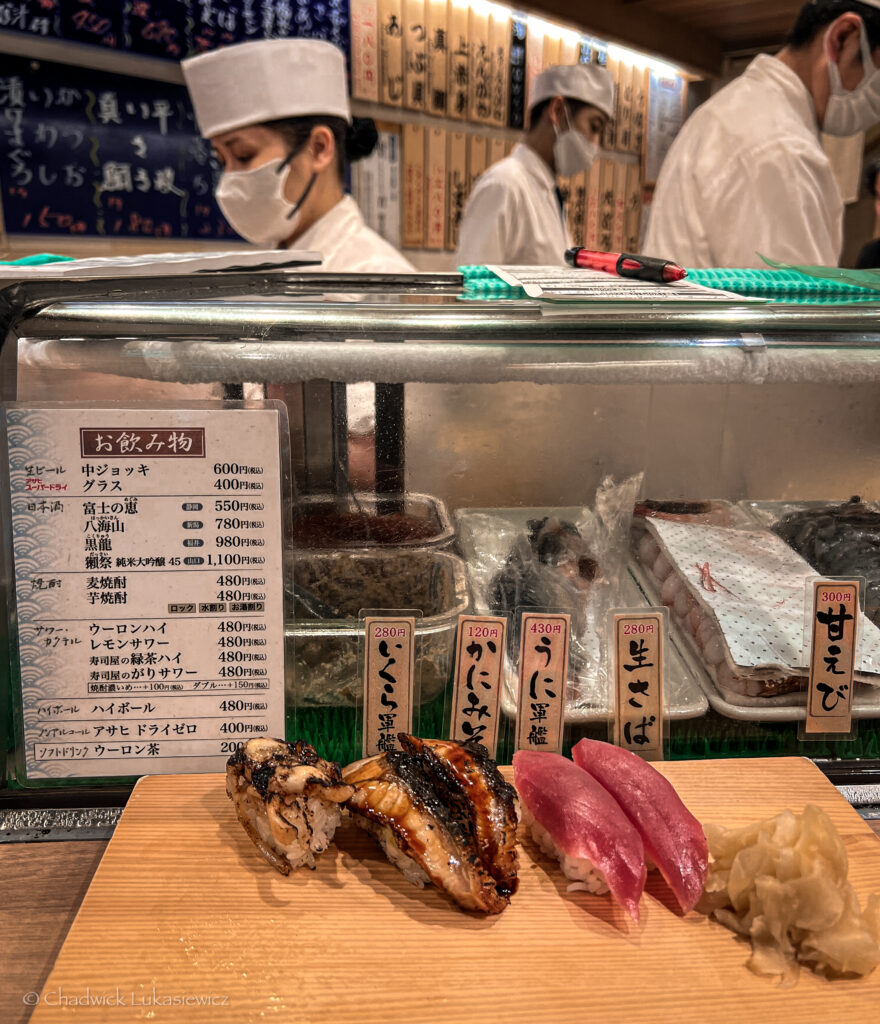
Ah, the double challenge of being neurodivergent AND navigating new cultural norms. It’s like playing social Jenga on a moving train! But fear not, here are some strategies:
- The Universal Language of Food: Food is a great equalizer and conversation starter. I once bonded with a group of locals at a Standing Sushi Bar over our shared love of sushi as they cheered me (ecstatically surprised, actually) for ordering everything and anything they recommended…no matter how wild it sounded…or looked. It was one of the most communal and enjoyable meals I’ve ever had, despite a complete language barrier!
- Local Recommendations as Social Currency: Asking locals for their favorite spots not only gets you off the tourist track but also opens up wonderful conversations. My ADHD curiosity has led to some amazing hidden gems this way!
- Embrace the “Lost Tourist” Role: When in doubt, lean into being a visitor. Most people are happy to help, and it’s a great way to start interactions.
- Non-Verbal Communication is Your Friend: Remember, a smile is understood in every language (except for the Asian monkeys, do not smile at those if you like your face). For those of us who struggle with verbal communication, especially in a new language, body language can be a powerful tool.
- Cultural Immersion through Experiences: Try local activities or classes. During a cooking class at Natya River Sidemen in Bali, my ADHD hyperfocus turned spice-blending into a sensory adventure. Creating (and devouring) Balinese dishes became a delicious way to connect with both locals and fellow travelers.
Join the “Find Joy in the Chaos” Community

As we navigate this beautifully chaotic world together, wouldn’t it be great to have a home base of fellow neurodivergent travelers? That’s why I’m excited to invite you to join our “Find Joy in the Chaos” community coming soon!
While we’re still in the early stages (because let’s face it, building a community is like herding cats for our ADHD brains), we’re creating a space where you can:
- Share your travel stories and tips
- Connect with other neurodivergent travelers
- Get personalized advice for your adventures
- Participate in virtual meetups and workshops
- And much more!
Stay tuned for more details on how to join this growing family of neurodiverse explorers. Whether you’re planning your first solo trip or you’re a seasoned nomad, you’ll find your people here.
Remember, every interaction, every cultural nuance observed, and every language barrier overcome is not just a travel experience – it’s an opportunity for personal growth and global understanding.
Your neurodiverse perspective brings a unique lens to these cultural exchanges.
Advanced Language and Cultural Navigation for Neurodiverse Travelers
Ready for one of the most exciting (and sometimes daunting) aspects of travel: navigating new languages and cultures? For our neurospicy brains, this can feel like trying to solve a Rubik’s cube while riding a unicycle… blindfolded.
But worry not! With the right techniques and a dash of our unique neurodiverse creativity, we can turn linguistic labyrinths into playgrounds of cultural discovery.
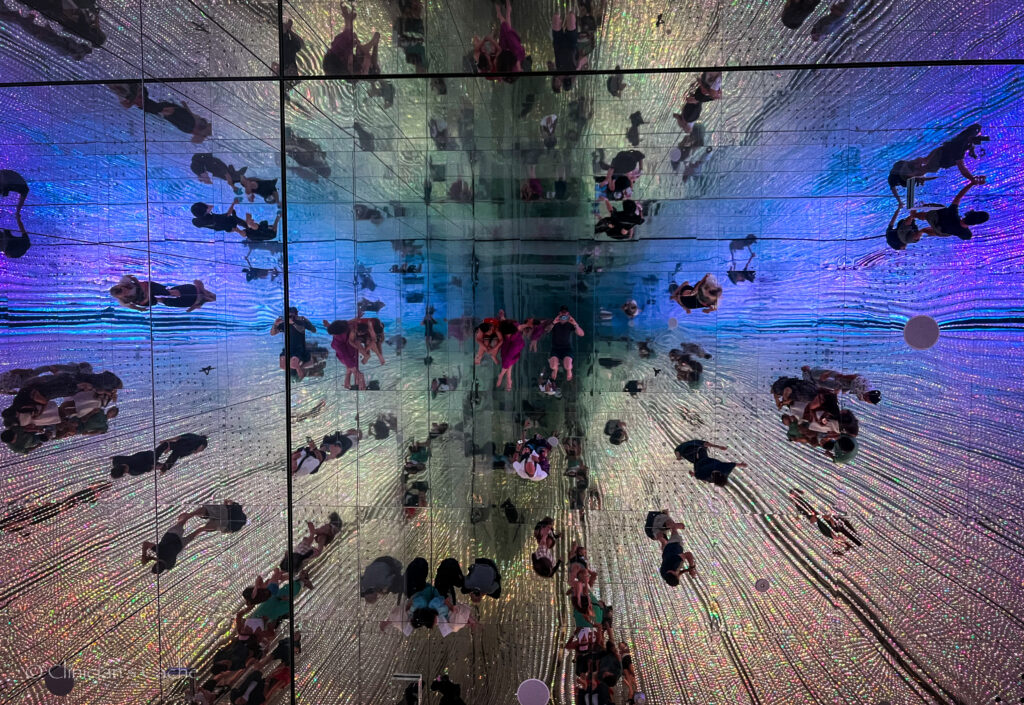
Neurodiverse-Friendly Language Learning Techniques
First things first – let’s talk about language acquisition that actually works for our brains:
- Visual Vocabulary: For my visual thinkers out there, try creating mind maps or colorful flashcards. One of my friends once covered his hostel bunk with Post-it notes of Italian phrases – much to his roommates’ amusement…and eventual participation! (Kranowitz, 2016))
- Gamification: Harness that ADHD love for novelty and rewards (Oh, hey there, dopamine!). Apps like Duolingo turn language learning into a game. I’ve found myself in many a late-night “just one more lesson” spiral! (Beauchaine et al., 2017)
- Immersive Audio: For auditory learners, try podcasts or language learning audio courses. I love listening to these during my daily walks or train rides. (Schulze et al., 2020)
- Movement-Based Learning: Combine language practice with physical activity. I’ve been known to pace my room while reciting verb conjugations or do squats for each new word learned (Brown, 2013).
- Hyperfocus Hacking: Channel that intense ADHD focus into language sprints. Set a timer for 25 minutes and dive deep into a specific aspect of the language. (Groen et al., 2020)
Tech Tools for On-the-Go Translation

Now, let’s talk about some lifesaving tech tools for real-time language navigation:
- Apple Translate or Google Translate: These apps are like having a pocket interpreter. Pro tip: Download the language packs before your trip for offline use. The camera translation feature has saved me from ordering some very questionable menu items!
- Speak and Listen Features: Perfect for when your pronunciation attempts are met with blank stares.
- Your Trusty Journal: I always carry a small notebook (my beloved Traveler’s Notebook) to jot down new words and phrases. There’s something about writing it down that helps it stick in my ADHD brain. Plus, locals often appreciate the effort and are happy to help with pronunciation.
Adapting to Cultural Norms with Neurodiverse Flair

Navigating cultural norms can feel like trying to follow an invisible script. Here’s how to adapt while staying true to your neurodiverse self:
- Pre-Trip Cultural Briefing: Before your trip, hyperfocus on learning key cultural dos and don’ts. Create a cheat sheet in your phone for quick reference.
- Observe and Mimic: Use your keen ASD observation skills or ADHD hyperfocus to watch how locals interact. It’s like a real-life game of Simon Says!
- The Universal Language of Kindness: When in doubt, a smile and a respectful attitude go a long way. Your genuine interest in the culture can often smooth over any accidental faux pas.
- When I was in Puerto Rico, I simply asked a bartender at the restaurant how he was doing today. A few minutes later he came back with a tear in his eye and asked, “Did you really mean that? In my 10 years here, nobody has asked or actually cared how I was.” Kindness and genuine interest mean the world.
- Sensory Preparation: Research potential sensory challenges in your destination (e.g., loud night markets, strong food smells). Prepare coping strategies like noise-canceling headphones or a comforting scent on a handkerchief.
Social Scripts and Communication Aids
For those moments when words fail us (in any language), here are some handy tools:
- Phrase Cards: Create small cards with key phrases in the local language. Great for non-verbal moments or when anxiety strikes.
- Universal Gesture Guide: Some gestures are universal, others can be offensive in certain cultures. Create a quick reference guide to keep you gesticulating appropriately.
- Emotion Flashcards: For my ASD travelers who struggle with expressing or reading emotions, consider carrying cards with basic emotional expressions. They can be a helpful tool in conveying your feelings or understanding others.
Embracing the Learning Curve: Turning Faux Pas into Connections
Let’s face it – we’re going to make mistakes. But here’s the secret: those awkward moments often lead to the best connections. Here’s how to embrace the learning curve:
- The Power of “I’m Learning”: Learn how to say “I’m still learning your language/culture” in the local tongue. It’s often met with appreciation and patience.
- Laugh at Yourself: Your ADHD impulsivity might lead to some linguistic mix-ups. Learn to laugh at yourself – often, locals will laugh with you, not at you.
- Ask Questions: When you realize you’ve made a cultural misstep, ask about it. Your genuine curiosity can turn an awkward moment into a meaningful cultural exchange.
- The “Oops” Journal: Keep a log of your cultural blunders and what you learned from them. It becomes a hilarious and insightful record of your journey.
Remember, your neurodiverse perspective brings a unique approach to language learning and cultural navigation. Your ADHD creativity might invent mnemonic devices that locals find hilarious and helpful. Your Autistic attention to detail could pick up on cultural nuances that others miss.
As we navigate these linguistic and cultural landscapes, we’re not just learning new ways to communicate – we’re discovering new facets of ourselves. Each interaction, each new word learned, and each cultural insight gained is a brushstroke in the masterpiece of your life experiences.
Capturing the Journey: Travel Journaling and Photography for the Neurodiverse Mind
Alright, friends, it’s time to talk about one of my absolute favorite aspects of travel: documenting our incredible journeys in ways that not only capture the moments but also work harmoniously with our chaotically wired brains. Get ready to turn your hyperfocus into a superpower and your attention to detail into a work of art!

Creative Documentation for the Neurodiverse Traveler
Let’s ditch the idea that there’s only one “right” way to document your travels. Our neurodiverse minds crave variety, so why should our travel journals and photography be any different?
- The Multi-Sensory Journal: Combine writing, sketching, and even small mementos (like ticket stubs or pressed flowers) to create a rich, tactile record of your journey.
- Audio Diaries: For those days when writing feels like too much, try recording voice notes. It’s a great way to capture the sounds of your destination too!
- Mind-Mapping Your Adventures: Create colorful, sprawling maps of your experiences. Perfect for visual thinkers and those who love to see connections.
- The Five Senses Challenge: Each day, record something you saw, heard, smelled, tasted, and touched. It’s a great way to stay present and mindful.
The Traveler’s Companion: A Leather-Bound Love Affair with Organization
Now, I’ve got to take…another…little ADHD detour here and gush about my absolute favorite travel companion: my Traveler’s Company Notebook (journal). Oh boy, do I have a love affair with this little, olive leather-bound beauty!

Don’t even get me started on the brass rollerball pen…swap the nib and bam, you got a fountain pen too!
I planned a whole day around visiting the flagship store in Nakameguro (Tokyo) to build my own travel journal. Let me tell you…it did not disappoint! It was like the heavens opened up and a combination of the journaling and travel gods smiled down upon me.
Imagine a compact, passport-sized journal that’s infinitely customizable. Fountain pen friendly paper (hello, my trusty brass rollerball pen!), multiple inserts for different types of entries, and a leather cover that just gets better with age. It’s like it was designed specifically for our ADHD and neurodivergent brains that crave both structure and flexibility.




I’ve spent hours (thanks, hyperfocus!) setting up my Traveler’s Notebook with different sections – one for daily logs, another for sketches (no they aren’t good and are basically ADHD doodles), a pocket for collecting ephemera, and even a section for language notes.
It’s become this beautiful, chaotic, perfectly imperfect record of my adventures. And the best part? It fits easily in my sling or pocket, so it’s always there when inspiration (or a random travel observation) strikes!
Harnessing Hyperfocus for Epic Travel Photography
Now, let’s chat about how to turn your ADHD or AuDHD tendency to hyperfocus into a photography powerhouse. Trust me, once you start seeing the world through your camera lens, you’ll discover a whole new way of experiencing your travels.
- The Hyperfocus Photowalk: Set aside time for dedicated photowalks. Let yourself get lost in the details of your environment. That crack in the sidewalk? It might just be the start of an amazing abstract shot.
- Theme Challenges: Give yourself a daily photo theme (e.g., “Red,” “Texture,” “Shadows”) to focus your ADHD brain and encourage creative thinking.
- The Golden Hour Alarm: Set an alarm for sunrise and sunset. These magical lighting conditions are perfect for channeling your hyperfocus into capturing stunning shots.
- Macro Madness: Invest in a macro lens or attachment. It’s amazing how our detail-oriented minds can lose themselves in the tiny worlds this opens up.
- Embrace Sudden Inspiration: Latch onto that sudden or fleeting thought and snag a quick shot. I’ve been AMAZED over the years going back through my camera roll…often finding some of my best and most intricate shots my ping-pong or a brain forget about.
Remember, it’s not about having the fanciest equipment. It’s about training your unique neurodiverse eye to see the extraordinary in the ordinary. Some of my best travel photos have been taken with just my smartphone and mobile tripod!


Journaling as a Tool for Processing and Managing Overwhelm
For many of us, travel can be as overwhelming as it is exciting. This is where journaling becomes not just a record of our trip, but a crucial tool for managing our neurodiverse minds:
- The Brain Dump Page: Dedicate a page (or several) to just getting all those swirling thoughts out. No structure, no judgment, just release.
- Gratitude Grounding: End each day by noting three things you’re grateful for. It’s a great way to shift focus from potential overwhelm to the positive aspects of your journey.
- Sensory Check-Ins: Regularly jot down how you’re feeling sensory-wise. Are you overstimulated? Understimulated? This can help you learn to recognize and manage your needs in new environments.
- The “I’ll Do It Later” List: For those brilliant ideas or must-see places that pop up at inconvenient times, have a dedicated space to jot them down for later. It helps quiet the mental chatter and keeps you present.
Making Memories Stick
Let’s face it, with ADHD, memories can sometimes feel like they’re written in disappearing ink. Here are some tricks to make them last:
- The Sensory Snapshot: Along with photos, record the smells, sounds, and textures of a place. These sensory details can be powerful memory triggers.
- Timeline Mapping: Create visual timelines of your trip. Great for those of us who struggle with temporal perception.
- The Comparison Game: Regularly note how your current experience compares to home or previous travels. These connections can help cement memories.
- Emotion Tracking: Don’t just record what you did, but how you felt. Emotional context can be a powerful memory enhancer.
Remember, the goal isn’t to document every single moment of your travels. It’s about creating a personal, neurodiverse-friendly record that captures the essence of your journey – the moments that made you laugh, cry, gasp in wonder, or simply feel alive.

Your travel journal and photos are more than just souvenirs. They’re a reflection of how your unique mind experiences the world. They’re proof that our neurodiverse perspectives aren’t just valid – they’re valuable, offering insights and observations that others might miss.
So, whether you’re scribbling in your Traveler’s Notebook, snapping photos of hidden alleyways, or recording the sounds of a bustling market, know that you’re not just capturing memories – you’re creating a testament to the amazing neurodiverse way you see the world.
Interested in learning how these photography principles apply to winter sports documentation? Check out my snowboarding guide and stories from the Alps!
Building Confidence: Solo Travel Tips for Neurodiverse Adventurers
Next up—one of the most exhilarating (and sometimes terrifying) forms of travel—going solo. As someone who’s navigated the bustling streets of Tokyo and found solace in the lush rainforests of Dominica, I can tell you that solo travel isn’t just possible for us – it can be transformative.

Embracing the Solo Journey: From Anxiety to Autonomy
Let me take you back to the start of my 6-week solo adventure through Asia. There I was, standing in the middle of Tokyo’s Shibuya Crossing, my ADHD brain simultaneously overwhelmed and exhilarated by the sensory tsunami around me.
In that moment, a realization hit me: I was completely, utterly on my own – and it was both terrifying and liberating.

Here’s the thing about solo travel for us neurodivergent folks: it’s a chance to set our own pace, follow our interests without compromise, and learn just how capable we really are. But it takes some strategy:
- Start Small: Begin with short solo trips closer to home before tackling international adventures. My solo snowboarding days and camping trips were game-changers in building confidence.
- Create a Flexible Itinerary: Plan enough to feel secure, but leave room for spontaneity. Your ADHD might lead you to an amazing hidden gem!
- Establish a “Home Base”: In each new city, find a café or park that can be your go-to spot for regrouping. It’s like a real-world save point in the game of travel.
- The Power of Podcasts: Load up on podcasts and/or audiobooks. They can be a comforting “companion” when you need a break from constant new stimuli.
Navigating Social Interactions: Making Connections on Your Terms
One of the biggest concerns for solo neurodiverse travelers is often the social aspect. But here’s a secret: solo travel can actually be easier for making connections. You’re more approachable alone, and you have total control over your social energy expenditure.
During my time in Bali, I discovered the joy of connection on my own terms. Some days, I’d chat for hours with fellow travelers at a beach bar or with the local hotel bartender. Other days, I’d retreat to my villa, recharging in solitude. The key is balance and self-awareness.
Try these strategies:
- Use Your Special Interests: Your passions can be conversation starters. My love for photography led to an impromptu photo walk with locals in Langkawi.
- Hostels and Co-working Spaces: These can be great for controlled social interaction. You can engage when you want and retreat to your private space when needed.
- Group Tours for Solo Travelers: It might sound counterintuitive, but joining a day tour can be a low-pressure way to meet people without the commitment of long-term travel companions.
- The Power of Shared Experiences: Don’t be afraid to open up about your neurodivergence when it feels appropriate and safe. You might be surprised to find others who relate to your experiences. These moments of mutual understanding can create instant connections and a sense of belonging, even far from home.
- To be honest—I’m shocked how many fellow neurodiverse friends I make locally and abroad just making a joke about my ADHD or having a touch of the ’tism. Guys, we literally gravitate in little neurodivergent wolf packs…take a look at your longest-term friends, am I right?

Finding Peace in Chaos: Solo Travel as Self-Discovery
Let’s fast forward to my recent trip to Dominica. There, in the heart of the Caribbean’s “Nature Island,” I had a profound moment of clarity about my AuDHD brain. As I stood beneath the cascading waters of Chaudiere Pool, an off the beaten path gem of a swimming hole, everything suddenly clicked.

Discovering this secluded paradise was like a metaphor for my neurodivergent journey. In that moment, surrounded by nothing but the sounds of the forest and waterfall, I realized how far I’d come.
Solo travel had taught me to trust myself, to see my ADHD impulsivity as a tool for discovery, and my Autistic attention to detail as a strength for fully immersing in new experiences.
Here are some travel tips for finding your own moments of peace and self-discovery:
- Seek Out Nature: Natural settings can be incredibly calming for our sensory-sensitive brains. Whether it’s a hidden waterfall or a quiet beach, these environments allow us to reset.
- Mindfulness on the Move: Practice mindfulness exercises tailored to your environment. In Dominica, I would focus on the feeling of volcanic sand between my toes or the myriad shades of green in the rainforest.
- Journal Your Journey: Keep a travel journal to process your experiences. I had several breakthrough moments about my neurodiversity while reflecting on my day’s adventures in my trusty Traveler’s Notebook.
- Challenge Yourself Mindfully: Set small, achievable challenges each day. Successfully navigating to a hidden beach or ordering a meal in a new language can be huge confidence boosters.
Practical Solo Travel Tips for the Neurodiverse Explorer
- Safety First: Share your itinerary with a trusted friend or family member. Consider using a GPS tracker device or app for added security.
- Medication Management: If you take medication, always carry extra in your day bag. Set alarms to remind you to take them, as changing time zones can be confusing.
- Sensory Escape Kit: Pack noise-canceling headphones, sunglasses, and comfort items from home. These can be lifesavers in overwhelming situations.
- Use Technology Wisely: Apps like Google Translate, Maps.me (for offline navigation), and XE Currency can be incredibly helpful. But don’t forget to look up from your phone and engage with your surroundings!
- Trust Your Instincts: Your neurodivergent intuition is a powerful tool. If something feels off, it’s okay to change plans or remove yourself from a situation.

Remember, solo travel as a neurodiverse individual isn’t about conquering your traits or masking to fit in. It’s about embracing your unique perspective and using it to experience the world in a way that’s authentic to you.
Every sensory sensitivity, every moment of hyperfocus, every social interaction (or deliberate solitude) is an opportunity for growth and self-discovery.
As you embark on your solo adventures, know that you’re not just exploring new destinations – you’re exploring the depths of your own capability and resilience. And trust me, there’s no view more breathtaking than the realization of your own strength.
The Neurodiverse Traveler’s Toolkit: Essential Gear and Resources
As someone who’s learned (often the hard way) what equipment can make or break a trip, I’m excited to share the neurodiverse traveler’s toolkit. Let’s turn potential travel challenges into opportunities for comfort and joy!

Sensory Regulation Superheroes
First up, essential items that can transform a sensory nightmare into a manageable adventure:
- Noise-Cancelling Headphones: These are non-negotiable for me. Whether it’s drowning out the drone of airplane engines or creating a bubble of calm in a bustling market, a good pair of sensory-friendly noise-canceling headphones is like a portable sanctuary for your ears. I swear by the Sony WH-1000XM5s for over-ear and Apple AirPods Pro 2 for earbuds– they’ve saved my sanity more times than I can count!
- Merino Wool Tee: I never travel without my Huckberry 72-Hour Merino Wool T-Shirt by Proof. Its ultra-soft, temperature-regulating, and odor-resistant fabric makes it a sensory-friendly essential for any neurodiverse traveler. Hands down my favorite piece of clothing.
- Light Therapy Glasses: These might look a bit sci-fi, but trust me, they’re game-changers for managing jet lag and regulating your circadian rhythm. They help you adjust to new time zones like a pro. Try AYO’s glasses that have a smartphone app for personalization!
- Weighted Travel Blanket: A little bit of deep pressure can work wonders for anxiety and sensory overload. Look for one that’s washable and compact – you’ll thank me when you’re snuggled up on a long-haul flight feeling cozy and calm. Gravity’s Weighted Blanket is my favorite heavier option, but the Bearaby Travel Napper makes an excellent portable and sustainable option.
- Fidget Toys: Never underestimate the power of a good fidget! I always pack a variety – from silent putty to tactile cubes. They’re lifesavers during long waits or when you need to focus while planning your next move.
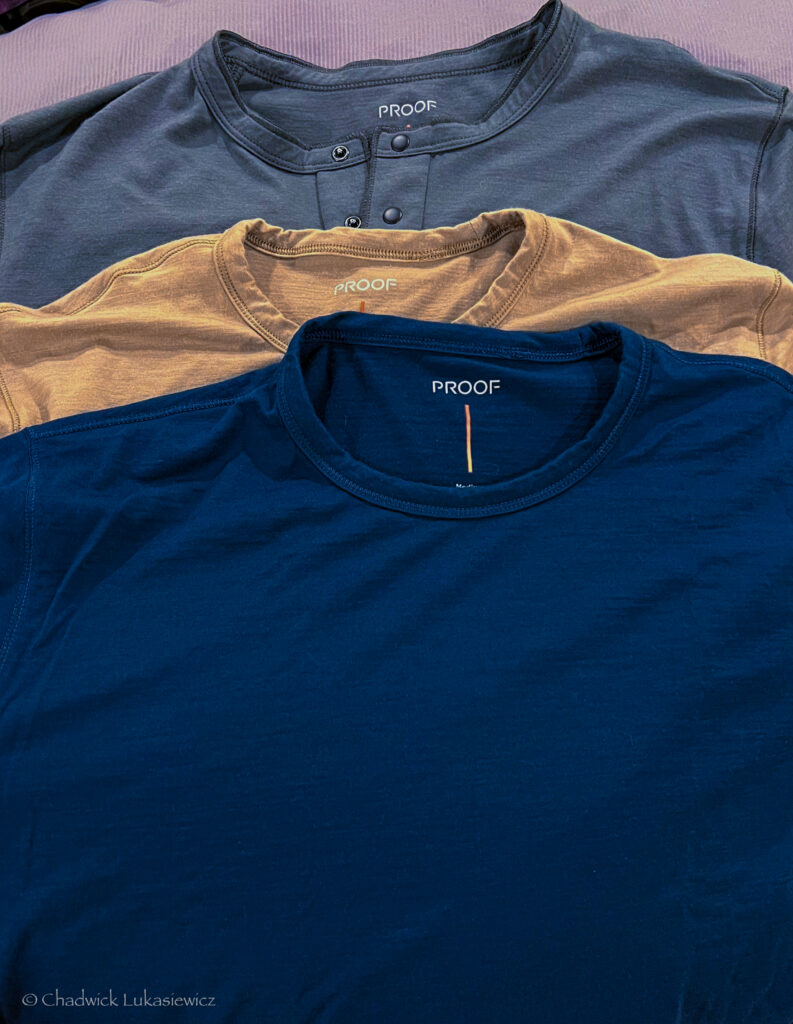
Tech Tools for the ADHD Brain
Alright, let’s talk about some tech that can help our sometimes scattered minds stay on track:
- Smart Luggage Tracker: As someone who once left their passport at a restaurant in Istanbul (panic ensued when I saw the waiter running down the street after us waving it!), I can’t recommend these enough. Apple AirTags or Tiles are great for keeping tabs on your belongings.
- Travel Planner App: While Notion has replaced many apps in my toolkit, I love Kayak and Tripsy (Apple ecosystem) for organizing all my bookings and itineraries in one place. It’s like having a personal assistant that never forgets a detail. Kayak also has some awesome AI Assistant features, plus their own Custom GPT!
- Portable Battery Pack: Because nothing induces ADHD panic quite like a dying phone in a foreign city. I always carry a high-capacity power bank – it’s saved me countless times when I’ve forgotten to charge my devices (which, let’s be honest, happens more often than I’d like to admit).
Comfort and Adaptation Essentials
These items might seem small, but they can make a huge difference in your overall travel experience:
- Compression Socks: Not just for long flights! Try wearing these on busy sightseeing days. They help with circulation and provide a gentle, grounding pressure.
- Customizable First-Aid Kit: Include any necessary medications, but also add in comfort items like your favorite tea bags or a small bottle of essential oil. It’s like a hug in a box when you’re feeling overwhelmed.
- Packing Cubes with Color-Coding: These have revolutionized my packing game. I use different colors (or sizes) for different categories (blue for regular clothes, green for hiking, etc.). It’s a visual system that helps my ADHD brain stay organized even when living out of a suitcase. Try out the compression cubes by Gonex or Eagle Creek.
Mindfulness and Grounding Equipment
Don’t forget tools to help you stay present and grounded during your adventures:
- Travel Journal: I never leave home without my trusty Traveler’s Notebook. It’s not just for recording memories – it’s a crucial tool for processing experiences and managing overwhelm. I love using it to jot down sensory observations or work through any anxiety that pops up.
- Pocket-Sized Grounding Cards: These are great for quick mindfulness exercises when you’re feeling overwhelmed. I made my own set with simple prompts like “Name 5 things you can see” or “Focus on the feeling of your feet on the ground.”
- Photography Gear: Whether it’s a DSLR or just your smartphone, having a camera handy can be a great way to focus your attention and stay present in the moment. Plus, it’s a wonderful way to capture memories through your unique neurodiverse lens!
A Personal Anecdote: The Power of the Right Gear
When I set out on my 6-week adventure through Tokyo and Southeast Asia, I thought I had it all figured out. My trusty Burton backpack had been my faithful companion on many trips and most days snowboarding, and I was convinced it was all I needed. Plus, I’d save money by not buying a sling bag. Win-win, right?
Oh, how wrong I was.
It only took one sweat-drenched day navigating Tokyo’s bustling streets in the sweltering July heat for me to realize my mistake. My back was a waterfall, my shirt a soggy mess, and I stuck out like a sore thumb among the stylish locals with their practical sling bags.

Desperate for relief, I made a beeline for the nearest MEGA Don Quijote – a treasure trove of everything you never knew you needed. There, amidst the organized chaos of the store, I found my salvation: a sleek, comfortable sling bag by Coleman in one of my favorite greens.
The difference was immediate and profound. Not only did my back thank me profusely, but I suddenly felt more in sync with the urban rhythm around me. I could easily access my essentials without becoming a human roadblock on busy sidewalks. Plus, I fit in better with the local crowd, leading to more genuine interactions.
This experience taught me a valuable lesson: the right gear isn’t just about comfort or looking good – it’s about enabling us to fully immerse ourselves in our surroundings. Sometimes, adapting our toolkit is the key to unlocking richer, more authentic travel experiences.
Final Thoughts on Your Neurodiverse Travel Toolkit
Remember, the “perfect” toolkit is personal. What works for me might not work for you, and that’s okay! The key is to experiment and find the combination of gear and resources that helps you thrive on your adventures.
Don’t be afraid to think outside the box, either. That stuffed animal from home? Those daily slippers? (Yes, I bring my Grey’s most places). If it helps you feel grounded, it deserves a spot in your suitcase. The seemingly silly app that helps you remember to drink water? If it keeps you hydrated and feeling good, it’s an essential tool.
Your neurodiverse travel toolkit is more than just a collection of items – it’s a testament to your self-awareness and your commitment to embracing the world on your own terms. Each piece of gear represents a strategy for turning potential challenges into opportunities for growth and joy.
Building Resilience: From Trauma-Informed Care to Adventure Therapy
Let’s chat about something truly transformative: how our travels can be more than just trips – they can be powerful tools for building resilience and emotional strength. As someone who’s navigated the world with ADHD and AuDHD, and as a trauma therapist, I’ve experienced firsthand the healing power of adventure travel.

Adventure Therapy: Your ADHD Brain’s New Best Friend
So – what exactly is adventure therapy? Simply put, it’s the use of outdoor experiences and challenges as a means of psychological healing and personal growth. And let me tell you, it’s like it was tailor-made for our neurodivergent minds!
Here’s why adventure therapy is a game-changer for individuals with ADHD or AuDHD:
- Natural Dopamine Boost: Our ADHD brains crave novelty and excitement – adventure travel delivers this in spades, providing a natural, healthy source of dopamine.
- Structured Unpredictability: The paradox of travel is that it offers a structured way to encounter unpredictable situations. This balance is perfect for our neurodivergent minds that thrive on routine but also need stimulation.
- Concrete Challenges: Unlike abstract emotional hurdles, travel presents tangible challenges. Navigating a new city or climbing a mountain gives us clear, achievable goals that build confidence.
- Sensory Engagement: For those on the autism spectrum, travel offers rich sensory experiences that can be both challenging and rewarding, helping to build sensory integration skills.
Personal Anecdote: During a solo trek through Nusa Penida, I found myself facing a particularly challenging trail. As I pushed through, using my ADHD hyperfocus to navigate the terrain, I realized I was doing more than hiking – I was building resilience with every step. The sense of accomplishment at the summit was unparalleled, boosting my confidence in ways that traditional therapy never had.
Trauma-Informed Techniques for Travel Anxiety

Let’s explore how we can apply trauma-informed principles to manage travel anxiety, with some unique twists tailored for our neurodiverse minds:
- Sensory Grounding Spiral: When anxiety hits, try this neurodiversity-friendly grounding technique. Start with your dominant sense and work your way through each sense in a spiral pattern:
- Sight: Find 3 colors you’ve never seen combined before
- Sound: Identify 2 background noises you typically wouldn’t notice
- Touch: Feel 4 different textures around you
- Smell: Try to detect 1 unfamiliar scent in your environment
- Taste: If possible, experience 1 new flavor (even if it’s just a mint or local candy) This exercise not only grounds you but also engages your neurodiverse brain’s love for patterns and detailed observation.
- Creating Safety: Establish a “safe space” wherever you go. This could be a physical place (like your hotel room) or a mental visualization. I always pack a small item from home that I can touch to feel grounded. For my fellow scent-sensitive travelers, consider carrying a familiar, comforting scent in a small rollerball bottle.
- Mindful Breathing: Practice square breathing (inhale for 4, hold for 4, exhale for 4, hold for 4) when facing travel stressors. I used this technique to calm my nerves before paragliding in Switzerland!
- Wim Hof Method: For a unique approach to stress management, try the Wim Hof Method. It combines controlled hyperventilation with cold exposure, which can be surprisingly effective for managing anxiety and boosting resilience. Start with the breathing exercise:
- Take 30 quick, deep breaths, inhaling through your nose and exhaling through your mouth
- On the last breath, exhale fully and hold for as long as you can
- When you need to breathe, take a deep breath and hold for 15-20 seconds
- Repeat for 3-4 rounds For cold exposure, try ending your shower with 30 seconds of cold water. It’s invigorating and can help reset your nervous system. Always start slowly and listen to your body.
- Narrative Reframing: Turn challenges into stories of triumph. That time you got lost? It’s not a failure – it’s an adventure in problem-solving and resilience-building. Try creating a “travel wins” journal where you record these reframed experiences.
By incorporating these techniques, you’re not just managing anxiety – you’re building a toolkit for emotional resilience that can serve you both in your travels and in everyday life. Remember, every challenge you overcome is a testament to your strength and adaptability as a neurodiverse traveler.
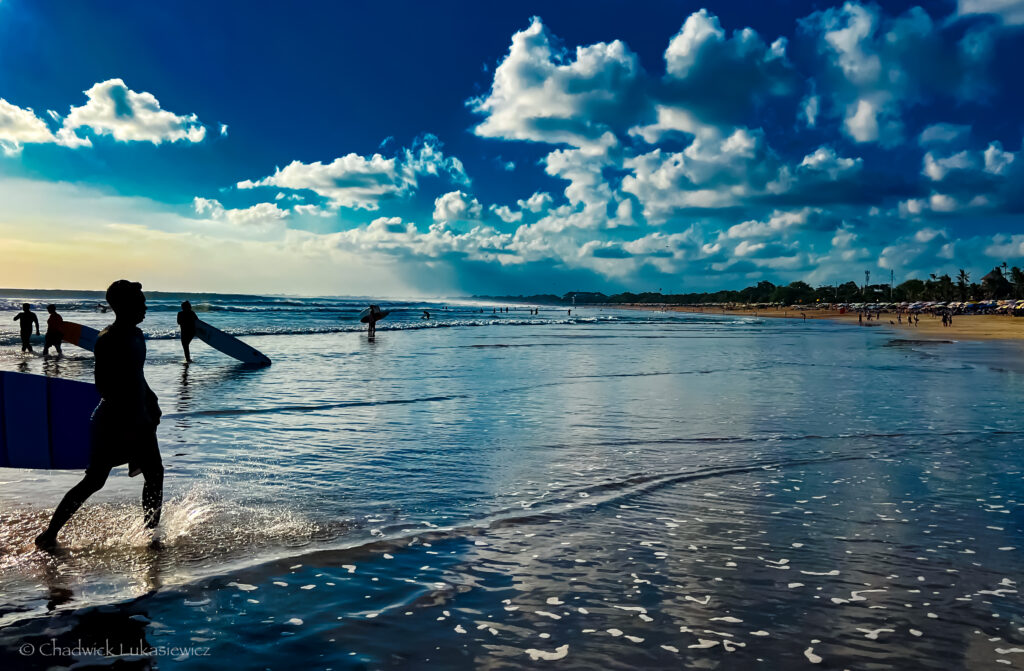
The key is to experiment with these methods and find what works best for your unique brain. Some days, the sensory grounding spiral might be your go-to, while on others, a quick Wim Hof breathing session in a cold shower could be just what you need.
The beauty of having a diverse set of tools is that you can adapt your approach to whatever situation you find yourself in.
Stepping Out of Comfort Zones: The Growth Zone
One of the most powerful aspects of travel is how it pushes us out of our comfort zones. Here’s how to make the most of these moments:
- Start Small: Begin with manageable challenges. Maybe it’s ordering coffee in a new language or taking a short solo trip.
- Celebrate Every Win: Did you successfully navigate public transportation in a foreign city? That’s huge! Acknowledge and celebrate these victories, no matter how small they seem.
- Use Your Special Interests: If you’re on the autism spectrum, leverage your special interests to motivate you to try new things. My love for photography has pushed me to explore places I might otherwise have avoided.
- Reflect and Process: Keep a travel journal to process your experiences. Writing about challenges you’ve overcome reinforces your resilience and helps you see your growth over time.

Reframing Challenges: The ADHD Adventurer’s Perspective
Our ADHD/AuDHD brains are uniquely suited to turning travel challenges into opportunities. Here’s how:
- Embrace Flexibility: When plans go awry (and they will), see it as a chance to exercise your adaptability muscles. That missed train in Italy? It led me to discover a charming village I never planned to visit!
- Use Hyperfocus to Your Advantage: Channel your hyperfocus into trip planning or learning about your destination. This not only prepares you but also builds excitement and confidence.
- Turn Impulsivity into Spontaneity: Our impulsive tendencies can lead to amazing discoveries. That sudden decision to join a local cooking class in Thailand? It became one of my favorite travel memories!
- See Sensory Sensitivities as Superpowers: Your heightened senses can lead to a richer travel experience. The vibrant colors of a Moroccan market or the intricate textures of ancient architecture become more vivid and meaningful.
Every challenge you face in your travels is an opportunity to prove to yourself just how capable and resilient you are. Each new experience, each obstacle overcome, is building a stronger, more confident you.
As we harness the power of adventure therapy and apply trauma-informed techniques in our travels, we’re doing more than just seeing the world – we’re transforming ourselves.

Turning Travel Experiences into Creative Outputs
Our ADHD brains are veritable idea factories, and travel provides the perfect fuel. So, let’s explore how to channel that creative energy into something amazing!
Harnessing ADHD Creativity for Travel Content
Remember that time you got so excited about the street food in Malaysia that you spent three hours creating a detailed flavor map of the night market? That’s not just a quirky travel memory – it’s content gold! Here’s how to tap into that ADHD creativity:
- Stream-of-Consciousness Travel Journaling: Don’t worry about perfect prose. Let your thoughts flow freely. I once filled five pages describing the texture of sand in Bali – it later became the intro to a popular blog post!
- Voice Memo Magic: For those moments when writing feels like too much, use voice memos to capture your thoughts. Your excited ramble about that hidden waterfall in Dominica could become the script for an engaging vlog.
- Mind-Mapping Your Adventures: Create colorful, sprawling mind maps of your experiences. These visual representations are perfect for planning blog post series or YouTube video concepts.
Organizing Travel Memories for Creative Projects
I know, I know – “organizing” isn’t usually our strong suit. But hear me out:
- The Memory Box Method: Create a digital or physical “memory box” for each trip. Toss in photos, ticket stubs, scribbled notes, even small souvenirs. It’s a treasure trove for future creative projects.
- Sensory Cataloging: Organize your memories by senses. What were the most striking sounds, smells, tastes of your trip? This approach is great for writing vivid, engaging content.
- Timeline Timelapse: Use apps like the Apple Journal app or Daylio to create a day-by-day timeline of your trip. It’s a great way to spot patterns and story arcs for your content.
Monetizing Your Neurodiverse Travel Perspective
Your unique way of experiencing the world is valuable – let’s turn it into a platform:

- Niche it Down: Instead of general travel content, focus on “ADHD-Friendly City Guides” or “Sensory-Sensitive Travel Tips.” Your specific insights are gold for fellow neurodivergent travelers.
- Collaborate and Connect: Reach out to other neurodivergent travelers or travel brands. Your unique perspective could lead to exciting partnerships.
- Diversify Your Offerings: Don’t just blog – consider ebooks, online courses, or even personalized travel planning services for neurodivergent adventurers.
Remember, your neurodivergent mind is your superpower in the content creation world. That detail others might overlook? It could be the hook that makes your content stand out.
Coming Home: Re-entry Strategies for the Neurodivergent Traveler

Ah, the bittersweet moment of return. As much as we love adventures, coming home can be its own kind of challenge for our neurodivergent brains. Let’s discuss how to make that transition smoother and keep the travel magic alive.
Streamlining Your Return Journey
For neurodivergent travelers, the process of returning home can be just as overwhelming as the departure. Here are some strategies to make your re-entry smoother:
- Global Entry and TSA PreCheck: Invest in Global Entry for expedited customs clearance when returning to the U.S. It also includes TSA PreCheck, allowing you to breeze through security on domestic flights. The reduced wait times and streamlined processes can significantly decrease travel-related stress. Honestly, I’m never traveling internationally without it again.
- Travel Lounges: Access to airport lounges can provide a calm oasis amidst the chaos of busy terminals. Consider a credit card like the Chase Sapphire Reserve or American Express Platinum, which offers Priority Pass membership, giving you access to lounges worldwide. These quiet spaces are perfect for sensory regulation before your flight home. Plus, they usually have free food and drinks (often including cocktails!).
- All-in-One Travel Cards: Cards like the Chase Sapphire Reserve (my personal favorite–but the Sapphire Preferred is great too) not only provide Chase & Priority Pass lounge access but also cover the cost of Global Entry/TSA PreCheck application fees. They often include travel insurance and reward points, making them valuable tools for frequent neurodivergent travelers. Travel smart with points!
- Comfort Item Accessibility: Pack a small bag with sensory comfort items (noise-canceling earbuds, favorite snacks) in your carry-on for easy access during your return journey. This can help manage any sensory overload during the trip home.



Dealing with Post-Trip Blues and Sensory Overload
- Gradual Re-Entry: Give yourself a buffer day (or two) before jumping back into your routine. Use this time to adjust to your home environment.
- Sensory Decompression: Create a “sensory haven” at home. I have a corner with my favorite textures, scents, and sounds to help me readjust.
- The “Travel at Home” Day: Plan a day where you’re a tourist in your own city. It helps bridge the gap between travel excitement and home routine.
Integrating Travel Experiences into Daily Life
- Skill Transfer: Did you discover a hidden talent for haggling in Marrakech? Use it to negotiate your next raise! Travel skills often have surprising applications at home.
- Global Flavour Infusion: Bring elements of your travels into your daily life. I learned to make Thai curry during a cooking class in Kuala Lumpur, and now it’s a comforting reminder of my adventures.
- Adventure Scrapbooking: Create a visual representation of your journey. It’s a great way to process your experiences and keep the memories vivid.
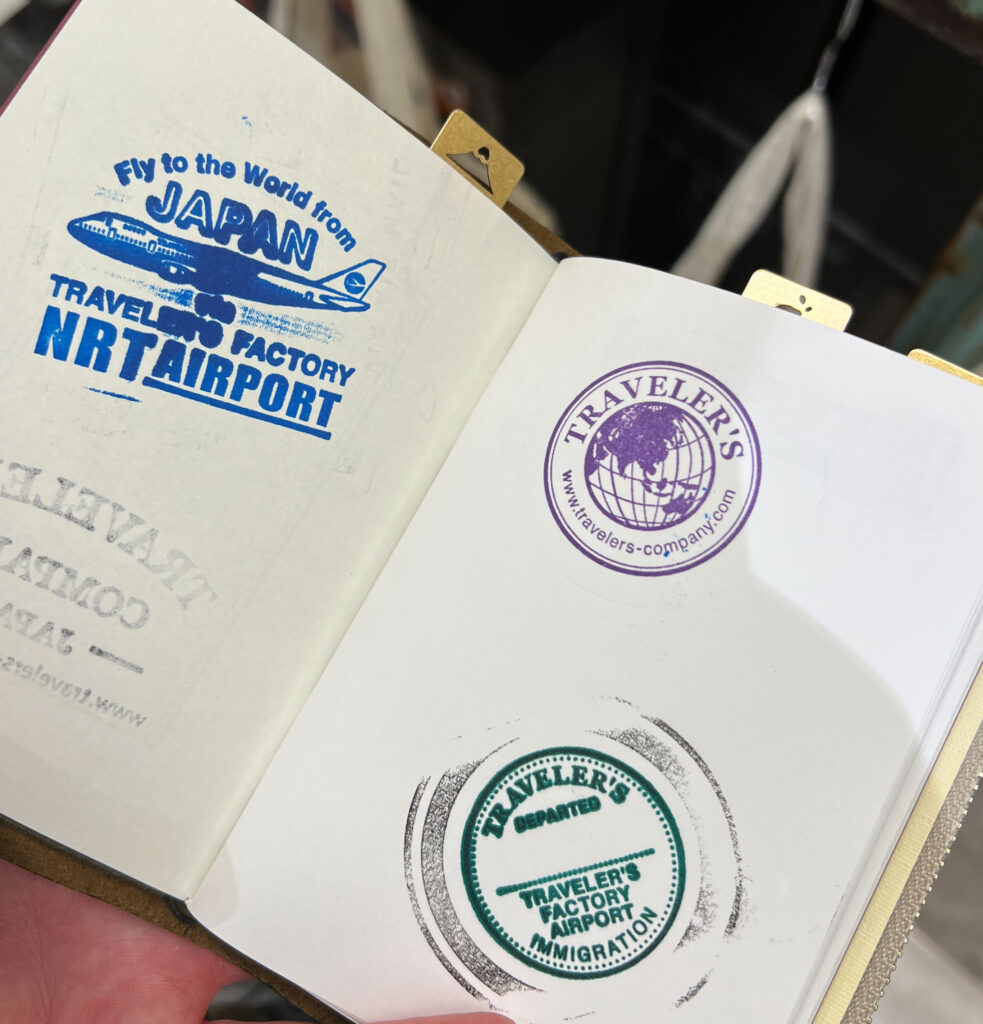
Reflecting on Personal Growth
- The Growth Journal: Start a journal specifically for reflecting on how travel has changed you. It’s amazing to look back and see how far you’ve come.
- Share Your Story: Don’t be shy about sharing your travel-induced personal growth with friends and family. Your journey might inspire others!
- Celebrate Your Neurodivergent Strengths: Reflect on how your unique brain helped you navigate challenges. It’s a great confidence booster!
Keeping the Wanderlust Alive
- The Next Adventure Pinboard: Start a physical or digital pinboard for your next trip ideas. It’s a great way to channel post-trip restlessness.
- Micro-Adventures: Plan small, local adventures to keep your explorer spirit satisfied between big trips.
- Virtual Explorations: Use VR travel experiences or detailed documentaries to scratch that travel itch when you can’t physically go somewhere.
Remember, coming home isn’t the end of your adventure – it’s just a pause in your ongoing journey of self-discovery and global exploration. Each trip leaves us changed, with new perspectives, skills, and stories to share.
Embracing the World Through Your Neurodiverse Lens
Well, fellow neurodivergent navigators, we’ve reached the end of our journey through this ultimate guide to neurodiverse travel. But as we’ve learned, endings are just new beginnings in disguise, aren’t they?

The Power of Neurodiversity in Travel
As we’ve explored the world – whether powered by ADHD, tuned to the frequencies of ASD, or dancing in the beautiful chaos of AuDHD – we’ve discovered something truly remarkable:
- Our neurodiversity isn’t just a part of who we are; it’s our secret weapon for experiencing the world in ways others might never imagine.
- ADHD impulsivity becomes the key to spontaneous adventures.
- ASD attention to detail uncovers hidden gems in bustling cities.
- AuDHD’s ability to connect disparate ideas bridges cultural gaps.
- OCD’s meticulous planning ensures no stone is left unturned, leading to rich, in-depth experiences.
These aren’t just travel tips – they’re invitations to embrace your neurodivergent superpowers.
Reframing Travel Strategies
We’ve learned that successful travel for neurodiverse minds is about:
- Creating flexible frameworks that allow our unique minds to thrive
- Turning sensory sensitivity into a ticket for richer, more vibrant experiences
- Using hyperfocus for in-depth exploration and connection with new cultures
- Transforming challenges into opportunities for personal growth
Remember, your way of experiencing the world isn’t a limitation – it’s your unique lens for deeper, more meaningful travel.
The Journey of Self-Discovery
Through our discussions on resilience and mindful adventure therapy, we’ve seen how travel can be more than just a vacation:
- It’s a powerful tool for personal growth and self-discovery
- Each challenge overcome is a testament to the strength of our neurodiverse minds
- Every fear faced becomes a stepping stone to greater confidence

Sharing Our Unique Perspectives
We’ve explored the art of capturing and sharing our travels:
- Turning experiences into creative outputs
- Preserving memories in ways that work for our neurodiverse brains
- Sharing our insights to help fellow neurodivergent travelers
Your voice, your vision, your way of seeing the world – it matters, and it deserves to be shared.
The Ongoing Adventure
As we’ve strategized about coming home and integrating our travels into everyday life, we’ve recognized a fundamental truth:
- The journey doesn’t end when we return
- Growth, insights, and newfound confidence are the real souvenirs
- These will continue to shape our lives long after the passport stamps have faded
Your Neurodiverse Travel Manifesto

As you close this guide and look towards your next adventure, take to heart:
- Your neurodivergent mind isn’t just capable of exploring this beautiful, chaotic world
- It’s uniquely designed to find wonder in every moment
- You’re not just a traveler – you’re an explorer, a pioneer
Whether you’re:- Navigating Tokyo’s sensory symphony with ASD superpowers
- Channeling ADHD energy into an impromptu tango lesson in Buenos Aires
- Using AuDHD’s connective abilities to bridge cultural gaps in Marrakech
You’re seeing the world through a lens that is beautifully, uniquely yours.
Your Call to Adventure
So, fellow neurodivergent explorers:
- Pack your bags (don’t forget your sensory emergency kit!)
- Set your Google calendar reminders (and then a few more, just in case)
- Step out into the world with new-found confidence
Approach each adventure – whether across the ocean or just across town – with the curiosity, enthusiasm, and unique perspective that only your neurodivergent mind can bring.

Remember: In a world that often tells us to fit in, our greatest adventures come when we dare to stand out. Your neurodiversity isn’t just a part of you – it’s your passport to experiencing the world in extraordinary ways.
Now, go forth and find joy in the beautiful chaos of travel (and life itself). The world is waiting to be discovered through your eyes. And trust me, it’s going to be one incredible adventure.
Safe travels, my friends. The world is yours to discover.
Some of the links in this post are affiliate links, meaning I earn a commission if you click through and make a purchase – at no additional cost to you. As a neurodivergent traveler and mental health professional, I only recommend products I’ve personally tested and found genuinely helpful in managing AuDHD symptoms, sensory needs, or travel challenges. Read our full affiliate disclosure in our privacy policy. And remember: your unique needs matter most when choosing tools for your journey!
References
Aron, E. N. (2016). The highly sensitive person: How to thrive when the world overwhelms you. Harmony.
Barkley, R. A. (2020). Taking charge of ADHD: The complete, authoritative guide for parents (4th ed.). The Guilford Press.
Beauchaine, T. P., Zisner, A. R., & Sauder, C. L. (2017). Trait impulsivity and the externalizing spectrum. Annual Review of Clinical Psychology, 13(1), 343–368. https://doi.org/10.1146/annurev-clinpsy-021815-093253
Brown, T. E. (2013). A new understanding of ADHD in children and adults: Executive function impairments. Routledge.
Ekman, E., Hiltunen, A., & Gustafsson, H. (2021). Do Athletes Have More of a Cognitive Profile with ADHD Criteria than Non-Athletes?. Sports (Basel, Switzerland), 9(5), 61. https://doi.org/10.3390/sports9050061
Garcha, J., & Smith, A. P. (2023). Associations between Autistic and ADHD traits and the well-being and mental health of university Students. Healthcare, 12(1), 14. https://doi.org/10.3390/healthcare12010014
Ghirardi, L., Pettersson, E., Taylor, M. J., Freitag, C. M., Franke, B., Asherson, P., Larsson, H., & Kuja-Halkola, R. (2019). Genetic and environmental contribution to the overlap between ADHD and ASD trait dimensions in young adults: A twin study. Psychological Medicine, 49(10), 1713–1721. doi:10.1017/S003329171800243X
Groen, Y., Priegnitz, U., Fuermaier, A. B., Tucha, L., Tucha, O., Aschenbrenner, S., Weisbrod, M., & Garcia Pimenta, M. (2020). Testing the relation between ADHD and hyperfocus experiences. Research in Developmental Disabilities, 107, 103789. https://doi.org/10.1016/j.ridd.2020.103789
Kranowitz, C. S. (2016). The out-of-sync child grows up: Coping with sensory processing disorder in the adolescent and adult years. TarcherPerigee.
Sands, G. (2022). Neurodiversity in emergency medicine training: A double-edged sword? Emergency Medicine Australasia, 34(4), 616–617. https://doi.org/10.1111/1742-6723.14043
Schulze, M., Lux, S., & Philipsen, A. (2020). Sensory processing in adultADHD—A systematic review. https://doi.org/10.21203/rs.3.rs-71514/v1

